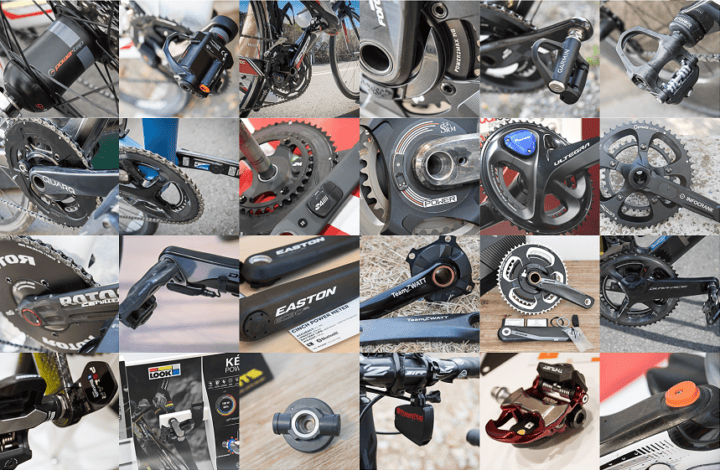
Once again, it’s time for the annual power meter buyer’s guide! It’s where I round-up every cycling power meter on the market, and talk through what’s happened in the last year. I give my opinions of every single power meter on the market, as well as some general guidance on choosing a power meter.
I’ll note that when I first set out to update/write each of them I thought to myself “It seemed like kinda a quiet year”. But what I failed to realize until I had to type it all up was that almost every company in the power meter market released something new in the last 12-14 months. See, many companies announced items at Eurobike/Interbike 2016 (a year ago), but not many delivered until this past winter (2017). Thus, in a lot of ways there hasn’t been a comprehensive look at what’s happened till now.
What we didn’t see this year was the dramatic price drops that we saw in years past. Instead, we saw modest price drops. Partially because there isn’t a ton of floor left to drop prices significantly, and partially because there was no single major product price driver drop. Still, we did see some incredibly compelling product price lowering – WatTeam down to $399 for a dual left/right setup, and Power2Max with their NG ECO down to $499 for a crank spider based offering.
To recap all of the major power meter announcements and reviews I’ve published since last year’s guide (in reverse chronological order):
Power Meter Pedal Shootout: Vector 3 vs PowerTap P1 vs Assioma
4iiii Announces New Precision Podium Power Meter Lineup
Favero Assioma Power Meter In-Depth Review
Hands-on: Garmin Vector 3 Power Meter
Hands-on: Stages LR Dual Left/Right Power Meter
Power2Max NG ECO In-Depth Review
Power2Max NG Power Meter In-Depth Review
ROTOR 2INpower In-Depth Review
Quarq DZero Power Meter In-Depth Review
WatTeam PowerBeat Gen2 Power Meter In-Depth Review
4iiii Precision Pro Dual Left/Right Power Meter In-Depth Review
Note, I’m excluding running power meters here. I think there’s something to be said for such a post, and very soon (with at least four running power meters on the market right now). But 3 out of 4 of those offerings are just weeks away from exiting beta, or in a beta-like state, so I think I’ll wait till December or January for that.
The goal of this post is NOT to give you a final answer that says ‘this is the power meter to buy’. If there’s anything I want to change in the industry it’s the mindset that there is a single perfect power meter for every consumer. Thus, if you ask someone for “the best power meter”, and they give you any answer other than “it depends”, don’t trust that person. That person should be asking you your specific use case, bike placement limitations, and how much you want to spend.
The cycling market has many unique use cases and thus you’ll need to take into consideration your specific requirements. For example, it’d be silly to go out and buy Garmin Vector if you’re looking to put it on a mountain bike. And similarly, it’d be silly to buy a PowerTap hub if you currently have HED H3 wheels, since it wouldn’t fit there.
Note that I’m not going to cover why you’d use a power meter here, nor how to use it. For those, start here with these posts. Instead, I’m just going to focus on the products out in the market today, and those coming down the road.
Finally, remember that power meters tend to be about as fiery as politics and religion. So keep in mind this is just my view. There are certainly other views out there (all wrong of course), but this comes from my perspective of trying out all the products below and hearing feedback from literally hundreds of people per day. There are no doubt edge cases I can’t easily cover in a single readable post, but I think I’ll cover 99% of the people out there. The remaining 1% can consider a donation of gold and/or expensive rocks for my further thoughts.
With that, let’s dive into things.
Power Meter Placement:
Before we start diving into the brands, features, and functionality, we should probably talk about placement. The reason being that unlike a bike computer that works on just about every bike on the planet, power meters actually have more limitations than you might think. Some limitations are straight technical (I.e. it won’t fit), and some are preference based (I.e. I don’t like it). In either case, for most people, this section will help narrow down the selection a bit.
Let’s just briefly ensure we’ve got everyone on the same page as far as where these things all go, starting with the below photo and using the text after it as a guide.
As you can see above, we’ve got five main areas we see power meters placed today:
1) Rear wheel
2) Crank spider
3) Crank arms
4) Pedals/Cleats
5) Bottom Bracket/Axle (not visible, behind tip of arrow)
There are tangential products on other areas of the bike (like handlebars), but none of those currently on the market actually have strain gauges in them. Thus they are more estimations (albeit some highly accurate) than actual force measurement devices. So for much of this post I’m keeping the focus on what’s known as “direct force power meters” – which are units that measure force via a strain gauge of some sort. And finally, I’m not going to talk about companies that have gone out of business (I.e. Ergomo, Brim Brothers), or products that haven’t been made in a long while (I.e. Polar chain power meter). Not that I’d recommend either anyway at this point.
Back to my photo-diagram, I want to expand out the crank area a bit and talk specifically to that. Here’s a quick cheat-sheet of which products are where (I’ve added a single-line item for non-direct force options):
Rear Wheel: PowerTap hubs
Crank Spider: Quarq/SRAM, Power2Max, SRM, PowerTap C1, Team Zwatt Zpider, FSA (Power2Max OEM)
Crank Arms: Rotor, Stages, Pioneer, 4iiii, WatTeam, ROTOR 2INPower, Team Zwatt Zimanox, Shimano, XCadey, Cateye (4iiii OEM)
Pedals: Garmin Vector, PowerTap P1, Polar/Look combo, Favero Assioma, Favero bePRO, Look, Xpedo
Pedal Spacer: LIMITS
Bottom Bracket: ROTOR INpower, Team Zwatt Zpindle, Race Face/Easton
Non-direct Force Power Meters: PowerPod, iBike, Arofly, PowerCal
In the case of left-only variants of some of those products (Polar/ROTOR/Garmin/PowerTap/4iiii), it’s still the same placement, just on the left side instead of both sides.
Features and Functionality:
Now that we’ve covered where each unit goes, let’s talk about the features that the power meters on the market have today. Think of this like a ‘list of terms’ you’ll need to be familiar with.
Total Power (Watts): This is the obvious one – every power meter has this today (even estimated ones!). This is simply measuring and transmitting your total power output to a head unit of some type.
ANT+ Support: Another relatively obvious one, the vast majority of power meters on the market today transmit via ANT+ to compatible head units. This allows you to use one of dozens of different head units out there. I’d be very hesitant to choose a non-ANT+ power meter unless you already know which head unit you’re going to pair to it (for example, the Polar V800 or Suunto Spartan).
Bluetooth Smart: Bluetooth Smart (or BLE/BTLE for short) has become the norm on power meters now as a dual ANT+/BLE configuration. However, I’d warn that the head unit support for Bluetooth Smart power meters remains (STILL!!!) a mess with different units working on different head units, even varying by firmware versions. Thus by and large even companies that support dual ANT+/BLE power meters on their head units (like the Wahoo ELEMNT/BOLT), are recommending folks use ANT+ when connecting from the ELEMNT to power meters, as it tends to work better. In time that’ll resolve itself, but the industry is still growing there. We are finally seeing Garmin support BLE power meters in all of their 2017 devices (Fenix 5/Edge 1030/FR935), so that’ll likely help drive some firming up of workability too, purely due to sheer numbers of people using Garmin units.
Left Only Power Meters: These power meters only measure power from the left side. All of these units then simply double the left power and produce total power. Stages really exploded this category with their left-only power meter, and other vendors followed suit including Garmin (Vector S variants), Rotor (Rotor LT, ROTOR inPOWER), 4iiii (some models), LIMITS, and Polar (Keo Power Essential) and many more. Note that all bottom-bracket power meters are left-only power. There are likely more I haven’t listed here.
Estimated Left/Right Power: This became all the rage just prior to true left/right units coming out, starting with the Quarq RED unit offering left/right power. That platform works by essentially splitting your crank in half and assuming that any power recorded while pulling up is actually coming from the left side, whereas pushing down is from the right side. Thus, an estimation. It’s good, but not perfect. Note that even with true left/right power (below), there’s actually very little in the scientific community around what to do with the data. While you may think that perfect balance would be ideal – that hasn’t been established. And some that have looked into it have found that trying to achieve balance actually lowers your overall output. The only thing folks agree on is that measuring left/right power can be useful for those recovering from single-leg injury. The PowerTap C1, Power2Max units, and all SRAM/Quarq models currently on the market use this method.
Actual or True Left/Right Power: This is limited to units that can measure your power in more than one location. Thus why we see it on pedals, as well as the more expensive crank-arm or pedal based power meters. You can’t measure it directly at the spider, instead you have to measure it upstream of that such as the cranks (ROTOR dual system, Infocrank’s dual system, Pioneer’s dual system, WatTeam dual, Shimano’s dual system, 4iiii’s dual system), pedals (Garmin, Favero Assioma/bePRO, Polar/Look, Look alone).
Pedal Smoothness & Torque Efficiency: These two metrics are available in the high-end power meters which contain true left/right power measurement as well as a supported head unit.
Cycling Dynamics: This is Garmin’s suite of Garmin Vector specific features that enable data such as platform offset and where in the stroke your power is coming from (power phase), as well as seated and standing position. Polar also has a variant of this in some of their new cycling units as well with their own pedals. Up until recently, other manufacturers couldn’t display this, but Garmin has effectively opened the standard up last month, so now it’s up to other companies/apps/head units to add support once ANT+ finalizes it. Still, I generally don’t see huge value in this day to day in my training. It’s geeky yes, but not a purchase decision swaying item for me.
Battery Swapping: All but one unit on the market today (SRM) supports battery swapping by yourself. SRM requires you to send it in (but gets way longer battery life in between swaps). The vast remainder of the shipping units out there today utilize a CR2032 and similar coin-cell batteries. Most get between 200 and 400 hours of run-time before you simply replace the battery. However, some of the newer units like the PowerTap P1 that runs on AAA batteries get a bit less time, as do units such as Favero and WatTeam that use rechargeable batteries (using micro-USB cables). Still, other rechargeable battery options like the Power2Max NG can get longer battery times per charge, along with Team Zwatt’s and Race Face/Easton’s models.
Calibration options: All units on the market today support some sort of calibration function, though to what extent is what differs. Some have numerous options (I.e. Quarq with an app allowing you much further access), while others are more black-box (I.e. Stages and Polar). For the most part, your primary concern here is really that some sort of calibration occurs, and that you can trigger it to happen on demand. Beyond that, it tends to get to more advanced calibration and torque checking methods. It should be noted that the term calibration can have very specific meanings to different people (technically most people are really doing a zero-offset). But for today’s post I’m going to keep it a bit more generic.
Ok, with all the core power meter features covered, let’s dive into the brands available today.
The On-Market Options:
We’ll start with products that you can effectively take home today. They’re in the market, available today for purchase and you can more or less install them today on the bike. They may have slight backorders if you were to order today, but units are shipping to consumers (which is where I draw the line). For the purposes of this section I’m focusing on direct force power meters (DFPM’s), in a later section I’ll cover non-DFPM’s.
Additionally, in the following section after this, I’ll cover announced but not yet shipping units that are on the road to market.
Note, this list is arranged in no particular order, you can use the sidebar shortcuts to quickly skip to different products. Also note that I’ve updated sections as appropriate for this year, but for products that haven’t changed, I’m not going to re-invent the text just to re-invent that text. I’d rather spend that time eating cookies and ice cream.
PowerTap Hub:
PowerTap has been around more than 17 years – longer than most folks realize actually. Though their popularity has really grown in the past few years, especially in the US. The iconic PowerTap hub replaces your rear wheel hub, which means that it’s tied into a single wheel. This makes it easy to move between bikes, but also makes it difficult if you have separate training and racing wheels – ultimately costing one of those two situations to lose out on power.
These days the PowerTap hub products ship with a dual capable ANT+/BLE cap. But if you find an older G3 unit that has an ANT+ cap on it, you can buy the dual caps or the BLE-only cap. Thus it’s pretty flexible that way. I use the dual caps on my units without issue across a wide number of devices.
Advantages: Easy install if you buy a wheelset with it pre-installed (my recommendation). Auto-zero while coasting helps keep things in check without you thinking about it. Manual calibration is easy, and swapping out batteries and the electronics pod quick and straightforward. Good customer service.
Disadvantages: Limited to a single wheel, so training vs racing scenarios can be tough. Also limited on things like disc wheels. And if you have multiple bike types where the wheel type changes (I.e. going from triathlon to cross), you may be in the same pickle there.
Would I buy it: Absolutely, and in fact, it’s one of the units that I’ve bought myself as a workhorse in my power meter testing (two units I own…three soon actually). Based on what I’ve seen, the PowerTap is the closest I get to ‘set it and forget it’ when it comes to power meters on the market today (talking specifically to calibration/offset variance and stability). However, if you’re one that changes wheelsets frequently in your training, I’d be more measured in deciding whether it’s worth not having power somewhere (I don’t think it is).
Relevant Posts: CycleOps Joule and PowerTap Wheelset In-Depth Review, PowerTap’s new hubs, Bluetooth Smart Trainers, iPad apps, and more, A sneak peek at two new PowerTap products (including high-speed data cap)– Note that I don’t really have a super-new In-Depth Review of the PowerTap G3, for no particular purpose, though you’ll find data from it in virtually every one of my power meter reviews.
PowerTap Pedals:
Since we’re on PowerTap products already, we’ll continue that trend with the P1 pedals. I’m separating out these three products because they’re so different (different placement, etc…). Versus if a product is simply a slight model change by the same company (I.e. Quarq Elsa to D-Zero), I’m lumping them together with differences noted in that section.
As for the P1 pedals, they were announced in the spring of 2015 and started shipping in the summer of 2015. Since then they’ve been adopted by many people, primarily due to their simplicity and ease of use. They can record some advanced metrics to the PowerTap mobile app, but not to the extent that Garmin Vector or Pioneer do. No worries though, they do have total power, left/right power, cadence, and other core metrics. Additionally, they also have dual ANT+ & Bluetooth Smart transmission.
Advantages: Easiest install of really any power meter out there (except perhaps the PT hub if it’s already in a wheel), no pods or torque wrenches required. Just a simple hex wrench to install and off you go, no settling period required either. Pricing is competitive with other full left/right units currently shipping. I view the AAA battery as an advantage, though a small group of folks sees it as a disadvantage (I love that I can get a replacement anywhere in the world at any tiny little store on a route if need be). Finally, no pods are on the units – so nothing to worry about breaking easily.
Disadvantages: Only a Look-Keo pedal/cleat type, and at that it’s not exactly a Look-Keo pedal (slight differences). Also, the battery life is more limited than some other power meters. Finally, there’s been a handful of folks that have seen issues with play in the spindle, though that’s largely dissipated in the last year or 18 months. PowerTap says that they addressed some early manufacturing issues there. Note that any earlier reviews seen on the interwebs with power spikes have long seen been resolved in a firmware update last winter.
Would I buy it: Up until this fall, the answer was a resounding yes. But with Favero Assioma now sitting $250 cheaper, and Garmin Vector 3 priced the same, it’s a harder pitch (see my full power pedal recommendations here). I’ve argued that PowerTap should be priced at $899 vs $999, and then it’d be ‘fair’ (since Garmin’s new pedal is sleeker and has more data). Still, you’ll find either of the two sets of PowerTap P1 pedals I own floating around my bikes in-use as test units constantly.
Relevant Posts: PowerTap lowers P1 pedal price to $999, matches Garmin Vector 3, PowerTap P1 Power Meter Pedals In-Depth Review, First rides with the PowerTap P1 Pedals & PowerTap C1 Chainring…and more, PowerTap announces P1 Power Meter Pedals, also PowerTap C1 chainring unit
PowerTap Chainring:
At the same time that PowerTap introduced their new P1 pedals in the spring of 2015, they also announced a new line – the C1 chainring power meter. This unit ships with the chainrings, per the pod you can see attached to the chainrings above. The company started shipping the product late fall of 2015.
I used the unit quite a bit across multiple seasons and into the winter without any issue. It’s essentially very similar to that of the Power2Max and Quarq units. The only major differences you’ll note are really more around compatibility with various cranksets.
Advantages: Dual ANT+ & Bluetooth Smart compatibility, ability to install onto your own compatible crank arms, price, and long battery life.
Disadvantages: Limited chainring compatibility is really the main one, being that the company is only offering certain compatibility options. For many people this won’t be an issue – but it’s worth noting. Like most of the other crank-spider region options (Power2Max/Quarq/etc…), it’s not hard if you know what you’re doing – but might be slightly intimidating to those not as familiar to figure out which model is compatible with your bike. Fear not, it’s easy for your bike shop though.
Would I buy it: Yes, I have no issues buying this unit. It’s been proven reliable and accurate, and after nearly a year of being on the market, I hear virtually no complaints. I kinda put the PowerTap C1, Power2Max and Quarq units all in the same boat: All are great options and all are fairly similar in features (and roughly in the same price range) – simply go with whatever fits your requirements around compatibility best.
Relevant Posts: PowerTap C1 Chainring In-Depth Review, First rides with the PowerTap P1 Pedals & PowerTap C1 Chainring…and more, PowerTap announces P1 Power Meter Pedals, also PowerTap C1 chainring unit
Power2Max:
Power2Max has been on the scene for roughly a little over 5 years now. Since then they’ve repeatedly driven down the costs of power meters in the industry, and gained significant market share in doing so. This year was no different by starting to ship their Power2Max NG units they announced at Eurobike 2016, as well as announcing and starting to ship their less expensive Power2Max NG ECO units this past summer.
The units are typically sold with or without cranks, so you’ll need to add your own, or purchase them from Power2Max pre-installed. The new NG units bring with them dual ANT+/BLE (the Type-S is ANT+ only), as well as a rechargeable battery. It also brings a bit of a steep increase in price. Whereas the NG ECO units still have ANT+/BLE, a coin cell battery, and skip on some of the advanced pedal metrics that you won’t actually use.
When I use the Power2Max (like Quarq and PowerTap), I find them among the least finicky and most ‘easy to use’. Day in and day out in testing, these units tend to ‘just work’ for me with very little calibration worries.
Advantages: The least expensive crank-based solution on the market today (NG ECO specifically due to price). Solid accuracy with a growing crankset compatibility matrix.
Disadvantages: On older units, there isn’t a method to turn off auto-zero today on units (which is really only an issue for the most advanced of advanced users), but the newer NG units do support it. Beyond that, it’s really hard to find disadvantages of the current units.
Would I buy it: No problem at all here, as noted above – it’s probably the best deal for a complete (captures all power, not just left) power meter on the market today, primarily the NG ECO. I love that they’re well into the ‘just works’ category. I have no concerns with purchasing any of the variants (NG ECO, NG, or even the older Type-S) – just be sure that if you get the Type-S, it’s one heck of a deal.
Relevant Posts: Power2Max NG Power Meter In-Depth Review, Power2Max NG ECO In-Depth Review, A look at the new Power2Max NG power meters, The Power2Max Type S Power Meter In-Depth Review, Power2Max drops prices…again. Now $610US, Power2Max releases new Type S line, expands compatibility, Power2Max introduces Type S mountain bike power meter, additional road bike models
Garmin Vector:
With Garmin embarking on their 4th year of Vector, they released their 3rd generation Vector, aptly named ‘Vector 3’. The goal here for them was to basically do away with all the past complaints, be it big or small. Gone are the pods that hang off the side, gone is the requirement to use a torque wrench to install it, and gone are the re-branded pedals.
While the company started shipping Vector 3 in early October to consumers, fulfillment has been slow going and delayed a bit. Still, I’ve been using it since late July and really impressed – especially with the final production unit. You’ll likely see my in-depth review drop any day now. I’ve been constantly swapping bikes with it, and it just works.
Garmin is the only company that offers Cycling Dynamics today (though, that’s soon changing), which includes all assortment of metrics on your pedaling style. Some of these metrics can be interesting from a bike-fit standpoint, but many don’t yet have a specific training or racing purpose. I’d hoped by now we’d have seen some science-like papers or something that showed the value of these, but nothing has happened in that realm – a number of years on.
Advantages: Cycling Dynamics, full left/right power recording, Vector 3 is now totally portable with no pedal torque wrench required. It looks like a normal pedal finally.
Disadvantages: Pedal choice (just Look-Keo compatible, albeit with a Shimano Ultegra upgrade/accessory kit available for Vector 2 units…not Vector 3).
Would I buy it: Yes (finally, I haven’t recommended them for years). I’m really liking mine, and I suspect it’ll become my default pedal going into the new year. The main reason I’d switch from the P1 to Vector 3 is primarily that it’s a nicer looking pedal, though the Cycling Dynamics pieces doesn’t hurt.
Relevant Posts: Hands-on: Garmin Vector 3 Power Meter, Garmin announces Vector2 (and 2S), also upgrade kit for original Vector owners, Garmin Vector In-Depth Review, Garmin announces Vector S: $899 power meter, also announces Cycling Dynamics,
Favero Assioma:
A few years back Favero came out of nowhere one summer to debut the bePRO power meter pedals. Surprisingly for a company nobody had heard of, they shipped near-immediately and were actually accurate. Oh, and they had great pricing.
This past summer they repeated that performance with their Assioma pedals (seen above). This added Bluetooth Smart capabilities, as well as simple installation that didn’t require any complex tools. A simple hex wrench and you were done in a few seconds. I reviewed them as well this past summer and found their accuracy solid (and moveability also solid). Better though is that they came in at $795USD for the dual leg set, the lease expensive dual-power meter pedal option on the market. They are rechargeable, and get about 60 hours of battery life per charge.
Advantages: Price – the unit is $795USD for the dual pedals, installation is easy and no longer requires tools like the older bePRO pedals. Accuracy is solid, and it can quickly and easily be moved.
Disadvantages: The small pods still remain, and they require slightly different cleats (same as PowerTap P1 pedals).
Would I buy it: Absolutely, I have zero issues with this unit. It’s a great alternative to the Garmin Vector 3 or PowerTap P1 pedals, simply saving $200+ over those options. The only downside compared to Vector is that it’s not quite as sleek, nor does it have Cycling Dynamics.
Relevant Posts: Favero Assioma Power Meter In-Depth Review, The Favero bePRO Power Meter In-Depth Review
Quarq:
Years ago, Quarq became the first non-SRM crank-based power meter that was actually affordable. Starting off on straight road bikes, they’ve expanded to other areas including track and cross bikes. The unit replaces your existing crank spider and depending on the model is typically sold with specific crank arms attached. You’ll need to ensure your bottom bracket is compatible, but if you shoot the Quarq folks an e-mail I’ve found they can usually help anyone figure that out easily. All Quarq power meters are made in South Dakota (US), along with servicing and shipping from there. The Quarq Cinqo was actually the first power meter I bought, and what The Girl subsequently purchased as well for her training.
Last year (2016) at Eurobike they introduced the DZero generation of units, which slightly increased accuracy but more importantly added Bluetooth Smart compatibility/connectivity. The units didn’t start shipping till the winter though, and Quarq struggled with backorders well into the spring. These days things are all caught up though and from my testing, the accuracy is solid and is easily a trustable power meter.
Advantages: Crank-based design means no wheel swap issues. Accuracy on-par with other units. Can swap chainrings without issue. Easy replacement of battery, and can utilize phone apps for further calibration. For me, it has a high ‘just works’ factor. The addition of Bluetooth Smart into the DZero Units was much needed.
Disadvantages: Crank arm selection has diminished some with SRAM acquisition (reducing compatibility), and while some pricing adjustments recently have helped, they do tend to be a bit more expensive than the Power2Max or PowerTap C1 options.
Would I buy it: From the standpoint of “Have I bought it?”, the answer is definitely yes. In fact, a DZero unit is set to become my base crank power meter on a new bike I’m building and should arrive in the next week or two. Plus, I own an older Quarq Cinqo, then a Riken, and The Girl also uses the older Cinqo.
Relevant Reviews: Quarq DZero Power Meter In-Depth Review, First Ride: Quarq’s New DZero Power Meter Series, Quarq introduces new $799 RIKEN AL power meter, Quarq/SRAM RED Review, Quarq RIKEN In-Depth Review, Eurobike 2014 Power Meter Roundup: Quarq News
Stages Power:
As many know by now, Stages really started the whole left-only trend, in that it’s attached to your left crank-arm (seen above), and thus is only measuring the left leg power. It simply doubles the left-leg power to get total power. This means if you vary, or vary in certain conditions, then the power might not be accurate – or something that you could compare to years from now on different products. They were also the first one to do dual ANT+ and Bluetooth Smart dual broadcasting.
But this past year at Eurobike (2017) they finally announced intention to sell their long-awaited dual option, which has both left/right sides. It’s what Team Sky has actually been using for years in testing. The option is slated to start shipping here in the next month or two, though I did get in a preview ride or two back in August. Once they have final production versions of the dual units, I’ll definitely do a review there.
For now, the focus is on their single leg option. If you are really set on a single leg unit– they make a great number of different crank arm configurations, and their underlying tech is solid.
Advantages: Inexpensive option. Easily moved from bike to bike with a simple Allen/hex wrench. Contains both Bluetooth Smart and ANT+ (and dual-broadcasts). Their new Gen2 design seems to resolve most people’s waterproofing concerns that caused earlier deaths. Also, their firmware update this past spring seems to have resolved many triathlete’s issues with head units not picking up signal while in the aero position (far less common on road bikes).
Disadvantages: Left-only approach means simply doubling left-leg power, may not be fully accurate representation of your power (high or lower). Note that existing left-only units are NOT upgradeable to dual leg units.
Would I buy it: This is a much more complex question (that really applies to all left-only units). Technically speaking it’s a well-made unit that accurately measures the left side. From a pricing standpoint, it’s tough to recommend the left-only approach with other options in the same price ballpark that fully capture all power. Further, as I’ve collected a tremendous amount of power meter data over the past few years with 3-5 power meters concurrently, I’ve started to understand my specific personal left/right balance biases. For most of my riding, there’d be no major issue with Stages. However for longer or higher intensity rides where I might fatigue more, I see some inaccuracies on Stages due to my personal leg differences. You might be the same, or you might be perfectly even. I don’t know.
I know it’s easy to point at Team Sky and simply say “It’s good enough for Froome”, but again remember that Team Sky has been using the dual setup (not the single leg setup) for years, and so it’s not really same-same.
Relevant Review: Hands-on: Stages Dual Left/Right Power Meter, Stages 2016 Sea Otter News, Stages drops prices, down to $529US, Stages Power announces carbon crank options, talks a bit about dual-leg power, Stages Power Meter In-Depth Review Update
4iiii Precision:
Next, we’ve got 4iiii Precision. They announced three years ago at Interbike, and are now onto their third generation of products – the latest being their ‘Podium’ lineup. Their initial product line started with a $399 left-only power meter, but these days they have both left-only and dual left/right options. They also sponsor/equip two WorldTour Pro teams.
I’ve seen really good accuracy on both their single and dual leg setups, as I showed in my review this past spring. I haven’t spent much time with their slightly updated Podium lineup they announced at Interbike, though I don’t expect that to be a substantially different product.
4iiii is a great option when you want to get into dual-leg power either cheaper than most other options, or if you want to go single-leg now and upgrade later.
Advantages: One of the least expensive power meters on the market today at $399USD. Can be applied to most cranks (non-carbon). Contains both Bluetooth Smart and ANT+ (and dual-broadcasts). Ability to upgrade to dual-leg on some models is key.
Disadvantages: Left-only approach means simply doubling left-leg power, may not be a fully accurate representation of your power (high or lower). However, if you have the dual-leg setup, that’s not a concern.
Would I buy it: For the dual-sided, absolutely. For the left-only, sure, but take the exact same general left-only comments I made for Stages and apply them here.
Related posts: 4iiii Announces New Precision Podiiiium Power Meter Lineup, 4iiii Precision Pro Dual Left/Right Power Meter In-Depth Review, 4iiii Precision Power Meter In-Depth Review, 4iiii Announces New Factory Pre-Install option, Dual Timelines/Prices, A Brief Update on 4iiii Precision Power Meter: Starts shipping this week, 4iiii’s Introduces $399 Power Meter, Precision: My First Ride With It
SRM:
SRM has been around since the beginning of power meter measurement, and I don’t think there’s anyone that would argue that SRM doesn’t produce solid power meters. But no power meter out there today is perfect. Not even SRM. They all have conditions where they do really well, and conditions where they do less well. It’s understanding those conditions that’s most important. Which doesn’t take away from SRM, but rather simply serves to note that I believe there’s a bit of an urban legend with them being the ‘gold standard’. Many of the products in this post can produce just as consistently accurate power as SRM (which again, SRM is good at doing).
This past year SRM released their rechargeable unit, which had long been in development and trade show display. However, the challenge for the company at this point remains the high price as well as lack of connectivity like Bluetooth Smart support.
Advantages: It’s a well established brand with a well understood product. The reliability is generally very good. With ANT+ you can use any head unit you’d like, and aren’t limited to just the SRM head units.
Disadvantages: Expensive. Servicing isn’t as open as other power meters on the market today. If looking at their head unit (not required), the current generation is simply really expensive for what you get. No BLE support. Also, some SRM units have problems with Wahoo ELEMNT/BOLT bike computers.
Would I buy it: While I do actually own one, I certainly wouldn’t recommend someone else buy one. With the exception of very specific technical use-cases that other power meters can’t fulfill (higher speed recording rates with older head units), I feel that for 98% of the market today, there are more budget-friendly options that are just as accurate. I don’t subscribe to the “gold-standard” concept, maybe at one historical point, but not in this market. And as the Pro Peloton has proved, virtually every other power meter in this list is just as good as an SRM (if not better).
Relevant Posts: Eurobike 2016 Power Meter Roundup: SRM, Eurobike 2015 Power Meter Roundup: SRM, First look at new SRM PC8 head unit with WiFi/GPS/ANT+ & Bluetooth, Eurobike 2014 Power Meter Roundup: SRM., Interbike 2014 SRM: Their iOS app, PC8, and their thoughts on low-cost power meters
Pioneer Power:
Pioneer has iterated nicely through two generations of power meters over the last four years, plus other crankset models, roughly paced at a new set of models per year. This year was true as well as the company rolled out Shimano R9100 support for the units. They maintained their price point at $999USD for a dual system (sending in your own cranks), and a slight dip in price to $559 for a left-leg system (also sending in your own cranks).
The Pioneer approach is a bit different than most other power meters on the market in that you don’t do the install yourself, but rather, you get the kit sent to you fully installed after sending in your crank arms. Additionally, it’s one of the few units on the market with true left/right high-speed data (starting at 12 samples per second (at 60RPM); faster the higher the cadence). The company does though sell complete cranksets (like the above pictured one) ready to go, but of course since that includes the crankset, it’ll cost ya a bit more. Note that the higher speed data is only available on their Pioneer head units.
Advantages: Has the highest recording rate of any dual-leg power meter on the market today, measures left/right power and associated metrics more in-depth than anyone else. A completely pre-set system once it arrives to you. Any choice of chainrings you’d like on the planet. Plus, the $999 complete system price for dual-leg isn’t too bad (for your own cranks).
Disadvantages: For crank arms, you’re somewhat limited to certain cranksets though that has definitely improved. There can be a small delay when you send away your own cranks to get it installed (versus buying a pre-installed set), though realistically very few power meters are available next-day anyway. Some have seen very minor delays in track-start type situations, but I think that’s very limited in scope.
Would I buy it: No issues at all for the dual system. I’m a bit mixed on the left-leg side. If you don’t plan to buy their head unit or upgrade to a dual left/right system down the road, then honestly there are cheaper (and better) options from Stages and 4iiii that do dual ANT+/BLE.
Relevant Posts: Pioneer announces new power meter options, head unit upgrades, bike sensor modeling, Power meter prices plunge further as Pioneer & SRM join PowerTap in price cuts, The Pioneer Power Meter System In-Depth Review, Interbike 2015 Power Meter Roundup: Pioneer, Eurobike 2015 Power Meter Roundup: Pioneer
Verve Infocrank:
Verve introduced their Infocrank power meter in 2014, and continues to chug along with updates to the platform and hardware options. This dual crank-based power meter has strain gauges on both crank arms. Additionally of note is that the unit has custom designed crank arms that are specific to Infocrank.
The unit transmits on ANT+, and uses small coin cell style batteries that you can go ahead and replace as required (no sending in needed). I tested one for…well, an exceedingly long period of time. And I saw absolutely zero accuracy issues with it – and can validate their claim that you don’t ever need to worry about pressing the ‘calibrate’ function on your head unit. Of course, at the same time, most other power meters are fairly accurate as well – but Infocrank seems to be more hassle-free when it comes to that side of things.
While they did introduce some data analytic options over the past year or so, we haven’t seen them add in Bluetooth Smart support yet, which is becoming a competitive requirement for all power meter vendors.
Advantages: Complete end to end system that’s mostly ‘install and forget’, gets fairly long life on coin cell batteries. The company claims higher levels of accuracy compared to the competition, but I’d say it’s more of a ‘just as accurate’ statement instead. Though the lack of requirement to occasionally manually zero is handy and low-maintenance.
Disadvantages: You’re limited in crank compatibility, since the units are built into their crank arms. The batteries can also be a bit fickle to find in out of the way places (thus, carry backups if you’re in the countryside somewhere – SR44 silver oxide batteries). Also, no Bluetooth Smart support.
Would I buy it: It’s tough. The price is higher, though sure, cranks and chainrings are included – but that’s far from justifying the price increase compared to other units that are just as accurate. Also, the lack of Bluetooth Smart support is challenging. So there’s nothing technically wrong with the unit, but I think it’s sliding back into being uncompetitive these days.
Relevant Posts: Sea Otter Power Meter Tidbits: Stages & Verve Infocrank, Verve Infocrank Power Meter In-Depth Review, Eurobike Power Meter 2015 News Roundup: Verve Infocrank, Eurobike Power Meter 2014 News Roundup: Verve Infocrank
ROTOR Power:
ROTOR has been in the power meter market for more than five years now, and has iterated through four different products in that time. They’ve changed technology and partners along the way, but I think they’re finally in a good spot with their latest 2INPower system, which was announced last year (2016), though made widely available in 2017 and that’s when I tested it this past spring.
The 2INPower system is unique in that it’s one of the few power meters to actually work with elliptical chainrings (of which ROTOR is famous for). Additionally, they have a pretty extensive suite of software tools for doing pedaling analytics (primarily indoors). They also went with a rechargeable battery as well as adding in Bluetooth Smart support, both of which worked well for me.
From an accuracy standpoint, I found it great outdoors across a wide variety of conditions, but I did have some weird indoor trainer quirks that ROTOR couldn’t solve. These quirks were echoed by other people, none with a resolution.
Advantages: Compatibility with ROTOR cranks and elliptical chainrings (most power meters don’t do this accurately). Ability to track additional stroke/balance metrics through their software platform.
Disadvantages: Limited compatibility with cranksets. Note, the older ROTOR sets do NOT do Bluetooth Smart, but 2INPower does. Though, I don’t really recommend the older ones anyway.
Would I buy it: It’s tough. My challenge with it is that I saw accuracy issues indoor (as did others), and at the end of the day ROTOR couldn’t provide any resolution to that (for me or otherwise). If that was resolved, I’d have no issues with it technologically. Pricing is trickier though.
Relevant Posts: ROTOR 2INPower In-Depth Review, ROTOR announces new INpower power meters, starting at $779US, First look at new ROTOR Power Meter, Eurobike Power Meter Update Post: Quarq, ROTOR, Pioneer, Brim Brothers & Ciclosport
WatTeam PowerBeat:
WatTeam broke onto the market a couple of summers ago (2014) with the announcement of a $499 left/right power meter system, which as of September is now down to $399, or $259 for the single-leg system! The sensors attach individually to your left/right crank arms, and then have separate communication pods that hang off the side of the crank arms.
They started shipping about two years ago, but then ran into snags and had to pause for a year. Then last winter (2016/2017) they resumed shipping and you’ll remember my in-depth review around then. Overall things were pretty solid, though I did notice two quirks (extremely rough cobbles and some hard sprints caused issues). They’ve since fixed the cobbles piece. This is something that’s definitely worth reading through the review to understand the precise limitations and whether or not they might impact you. And for the price, it’s definitely worth considering.
Advantages: Self-install, price is incredible, and by far the lowest dual left/right power solution on the market. Also, doesn’t require a specific pedal type.
Disadvantages: Some limitations on crankarm compatibility, plus the sprint accuracy issue I saw is still outstanding. Some might also dislike the install procedure, but it’s silly easy.
Would I buy it: For the right person, yes. I think as a triathlete you could actually use this unit without issue, since most triathlete training/racing (non-ITU) doesn’t involve huge sprints. Instead, it’s more about sustainability of power. Plus, the pricing is incredible.
Related Posts: WatTeam announces $259 power meter pricing, new models and more, WatTeam PowerBeat Gen2 Power Meter In-Depth Review, A Fall 2016 Update from WatTeam and their $499 PowerBeat, A WatTeam PowerBeat Spring 2016 Power Meter Update, A Preview: A Week Riding the Watteam PowerBeat $499 Power Meter, A chat with the CEO of Watteam and their new $499 power meter: PowerBeat, Watteam’s PowerBeat: A first look at prototype/beta power data
Race Face/Easton:
Next up we’ve got a small gaggle of new units from Easton and Race Face, cohesively branded as their CINCH power meter. The two brands are both owned by Fox Factory. The CINCH unit is designed to be compatible with road, mountain, and cyclocross bikes, making them a bit wider spread on the compatibility front than some other power meter companies that may target just road riders. The main draw here is enabling both companies to offer consumers units that are compatible with their group lineups with minimal hassle to get a power meter.
The underlying tech though is actually kinda interesting. In this case, for reasons that are a bit weird – neither Race Face nor Easton wanted to disclose that the units were actually powered by Sensitivus (more commonly known as the company behind Team Zwatt). In fact, you may remember this very crank from my Team Zwatt preview test a year ago.
As for the tech itself, the unit is left-only as it’s placed within the bottom bracket and won’t capture the power from the right leg. This makes the left-only nature similar to that of Stages, 4iiii Precision (non-dual), and many others offering single-sided solutions. Though, priced from $599USD for the unit itself, it’s a bit more than those companies. Also, it’s micro-USB rechargeable, and gets about 400 hours.
Advantages: Broader compatibility with mountain biking and cyclocross bikes. Reasonably long-term battery life, dual ANT+/Bluetooth Smart.
Disadvantages: A bit pricey for a left-only unit, though options are admittedly slim for off-road usage.
Would I buy it: I haven’t had a chance to test it in-depth, so it’s too early to say.
Related Posts: Sea Otter 2017 Power Meter Roundup
Team Zwatt:
Team Zwatt launched last summer via crowdfunding with a few different power meter options. Behind the scenes they also provide the technology for Easton/Race Face power meters. This past spring they started shipping their own Team Zwatt units to customers, and it sounds like things are mostly caught up these days. I’ve had a few readers receive units lately, and mostly stuff seems to be working well. I’ve heard of minor teething issues with the subscription service, but nothing that’s a blocker.
What’s unique about them is their subscription approach, which lowers the upfront cost of the unit by supplementing it with a subscription service fee. This way if you take a prolonged break from needing a power meter, you can turn off the power meter function while still leaving it on your bike (and stop paying for it). While I did test out a beta version a year ago, I haven’t tried a final production model yet to see how it all works now that things are past the testing phase. Still, I think it’s definitely a compelling model if priced right.
Advantages: Lower upfront cost, a few different power meter attachment options, company has experience as an OEM to other brands – so not really an unknown startup.
Disadvantages: Pricing is a bit questionable longer term, especially compared to some other models on the market these days.
Would I buy it: It’s hard to say. The pricing model is both a pro and a con, and I’m not sure for me specifically if that pricing model works. But if it works for you – go forth!
Related Posts: Hands-on: Team Zwatt launches subscription based power meter, Sea Otter 2017 Power Meter Roundup
FSA PowerBox:
Last year FSA partnered with Power2Max to put together what was at the time a unique branded option from FSA by Power2Max at a relatively reduced price. It was (and still is) a very solid deal. This past summer Power2Max made that power meter available themselves as the Power2Max NG ECO. It’s the exact same physical unit, just different branding, and very slightly different firmware.
In my Power2Max NG ECO in-depth review you’ll see that it does exceptionally well. And likewise, on another of my bikes I’ve had the FSA PowerBox as well since summer, and it too is very solid. Both are great. The only difference to be aware of is that the two companies sell different crank arm configurations, and in the case of FSA you have to pay extra for a firmware update to enable Bluetooth Smart. Whereas with the P2M NG ECO unit it comes with it. But again, you’ll need to look at what crank options you want to see what makes the most sense for ya.
I’m hoping to get my review finally published here soonish, though you’ll find data in a number of my product reviews already from the last few months.
Advantages: Accuracy is solid, super easy to use. Generally good pricing once you remember that the carbon cranksets are included within the price.
Disadvantages: Bluetooth Smart costs a bit extra, so you’ll want to factor that into the price.
Would I buy it: I’d have no issues buying it. I’d just want to do my research and ensured it fit my specific crankset requirements. But technologically it’s solid.
Related Posts: Sea Otter 2017 Power Meter Roundup
Shimano Dura-Ace Power Meter:
Last year prior to the 2016 Tour de France, Shimano announced their Dura-Ace integrated power meter. While Shimano is starting with their high-end Dura-Ace, everyone in the industry knows how this story ends (by going to cheaper models eventually). Still, the product does have some minor quirks in terms of hardware design. Some of that is likely done to have it match the general Shimano Dura-Ace aesthetic, more than just technical reasons. The pricing (which is confusingly different across the world) may be a stumbling block for now, but I’m sure that’ll eventually be less of an issue.
The company had planned to start shipping earlier in the year (2017), but kept pushing that back. However, they did seed a handful of units within Japan back in September, and have very slowly dripped out a few more units to various markets. I’ve only seen a single plot’s worth of data from any 3rd party, and that was shared to me by a competitor of theirs – so I’d take it with a grain of salt. Shimano had promised a review unit to me by mid-September, but that keeps getting pushed back. Still, I’m looking forward to trying it out once they’re ready.
Advantages: Integrated into Shimano purchasing/distribution, one vendor to deal with. Has Bluetooth Smart app configuration options.
Disadvantages: Magnet based means slightly more complex install, unknown accuracy, unknown longevity. Only ANT+ power broadcasting though, Bluetooth Smart is purely for settings tweaks.
Would I buy it: Maybe, but I need a unit to test it. Also, I’m hesitant on pricing at this point.
Related Posts: Eurobike 2016 Power Meter Round-up: Shimano, First Look: Shimano Dura-Ace R9100–Now with power meter option
Polar/Look Pedals:
(This section talks specifically to the Polar-branded Look/Polar combo, see next section for Look-branded option)
The Polar/Look Power System pedals is more than 6 years old at this point, though it’s had a few overhauls along the way – most notably now being full Bluetooth Smart compatible, which gives it compatibility
Note that there’s been a bit of a relationship status change been Polar and Look, so things are in a wonky state right now. Look announced their own dual ANT+/BLE version two years ago, though availability of that is questionable at best.
Polar also has their Keo Power Essential, which is a left-only option. In this scenario you just get the left pod and pedal, and then it doubles the power for the right side. This has the same inherent limitations as Stages and others, but also offers a lower price point than the full Keo dual-pedal system.
Advantages: Pedal based means theoretical portability, system largely ‘just works’ once you get it installed. Appears accurate, but really hard to validate all aspects. On Polar head units, you do get more pedal metric information than most units offer.
Disadvantages: Installation is a bit complex. Not as easy as Assioma/Vector3/PowerTap P1. Limitations on crank widths/lengths. Only Bluetooth Smart support (not dual ANT+/BLE). Generally overpriced.
Would I buy it: Definitely not. Plus, I’m not even sure Polar is actually selling this thing anymore (certainly not making it).
Relevant Review: Polar Look Keo Power System–Pedal Based Power Meter–In-Depth Review, Polar announces new Keo Power systems, and V800/V650 power meter update plans, and more!
Look Keo Power:
(This section talks specifically to the Look-branded option)
As noted in the previous section, Look spun off their own product from the previous Polar partnerships two years ago and started shipping earlier this year. That product upgraded the pods used, as well as added dual ANT+/Bluetooth Smart solution. In other words, it became a viable option within the power meter world.
The only problem is – aside from seeing this on a couple of sponsored riders in the WorldTour, I’ve yet to see any real-life people with this. And I’ve even heard from a few DCR readers that sent in their Polar pods to Look to get them ‘upgraded’ to the dual ANT+ variant, only to never get them back (many months later). So…yeah.
Advantages: Pedal based means theoretical portability, dual ANT+/BLE allows multiple head units.
Disadvantages: Only one pedal type, limitations on crank arms/types. Incredibly overpriced when it launched.
Would I buy it: No. It’s overpriced. Simple as that. At $1,500 for the dual set, that’s far more than the PowerTap P1’s which do exactly the same thing and don’t require funky installation or have pods hanging off the sides. Plus, it’s really unclear whether this is even a product anymore.
Relevant Review: LOOK’s new dual ANT+/BLE Power Meter Pedals: A bit more information
LIMITS Power:
LIMITS came onto the scene during the spring of 2015, as part of an Indiegogo campaign that planned to ship by the end of 2015. That didn’t happen. However, they did recently start shipping initial units over the last 3-4 weeks. The unit sits in between your pedals and your crank arm, offering near unlimited compatibility. It’s priced at sub-$300.
I’ve historically been very skeptical of their product, timelines, and company. Like, the most skeptical I’ve ever been of a product.
Earlier this summer (2016) I received a production unit from a backer who attended their launch event, which I published a detailed comparative review of sorts here. In short, it failed. The company then went back and worked on some further firmware updates and minor hardware changes, which aim to fix those issues. However, by and large, those firmware updates haven’t fixed the issues. In the last few weeks (Oct 2017) they sent out notice that they’re working on a new Gen2 version, and people still waiting on their Gen1 versions will get that instead, eventually.
Advantages: Compatible with virtually any pedal type, crank arm, or wheelset. Inexpensive.
Disadvantages: Simply isn’t accurate, battery caps easily break off, questionable horrible customer service. Some people are concerned with q-factor changes (basically increase in distance between your two pedals), though, most don’t realize your q-factor changes anyway between a mountain bike and road bike for example.
Would I buy it: No, not at this point. If they can address accuracy issues (which they haven’t after more than a year), that’s different. I’ve yet to see a single data set from someone with multiple power meters showing accurate data.
Relevant Posts: LIMITS Power Meter Accuracy Data
RPM2 FOOTPOD POWER METER
The RPM2 power meter is essentially a footpod (insole) that you put in your cycling shoe to measure power. The company started in the medical space, and then branched out into the cycling and running realm. Initially they only supported their own app for recording of power (which was a non-starter), however they’ve since branched to ANT+ compatibility as well.
The company started off focusing on the elite athlete as their target market, but has since rebranded as ‘casual cycling use’. I haven’t spent any time with this unit unfortunately however. I’ve gone back and forth a little with them on getting units, but nothing much ever materialized. It’s tricky because there’s specific measurements you need for each foot (not just shoe size), and thus the units aren’t resalable either. I haven’t heard of any DCR readers having a good experience with it unfortunately.
Advantages: Not bike dependent being insole based; can move easily from bike to bike simply inside your shoes.
Disadvantages: Resale value is effectively zero, being it’s sized to each of your feet individually.
Would I buy it: Given the disadvantages, I’m struggling to see a reason I would buy it.
XCadey Power Meter
This is a left crank arm power meter similar to the design of Stages. The price has been appealing for many people because it’s sub-$200. Unfortunately, I haven’t seen any evidence that this Chinese power meter is at all accurate. From the company’s own eBay pages (which is where they sell it), they use power meter comparison graphs that quite honestly look horrible. The power is often wrong by upwards of 80w (compared to an SRM and PowerTap hub data they provide), and in fact it’s virtually never aligned properly. You’d be far better off looking at a non-DFPM such as PowerPod down lower for roughly the same price. Or spending a bit more on something like the WatTeam single-sided unit. While some have asked for a review, I’m honestly hesitant to waste time on a product that the company can’t even bother to cherry pick the best possible data to publish on their sales/marketing pages. What’s the non-good data look like if this is the best they have?
Advantages: It’s still at least a Shimano crank arm even if it doesn’t provide accurate power numbers.
Disadvantages: It doesn’t appear to provide accurate power numbers.
Would I buy it: Nope.
Non-DFPM Devices:
Finally, we have a few options that use calculations to determine your power output. These units don’t actually measure your work effort using strain gauges, but instead rely upon other environmental factors. Thus the name of non-Direct Force Power Meters (DFPM). Some take offense to these being called ‘power meters’ since they lack a strain gauge, but frankly that’s stupid. There’s no international definition that states how a power meter shall measure power, but rather just that it measures it in some way. These units come to a measurement via different methods than direct force measuring strain gauges. I don’t care whether they use strain gauges or small chipmunks, as long as it ends up accurate. Inversely, if it’s inaccurate, then it’s useless – even when using a strain gauge.
Historically (in all the years I’ve been doing this), I’ve kept these as a separate category – in large part because they were indeed so different in terms of not just product design, but also accuracy. However, I do want to highlight the PowerPod as being one that for the right consumer I would recommend.
PowerPod: This was launched at Interbike 2015, and then started shipping about 60 days later. The concept is built upon the iBike technology of using aerodynamics for power. In my in-depth product review, I found it did very well against a suite of power meters in a wide variety of conditions. For a $299 power meter, it does quite well. There are specific edge cases where it might not handle as well, but if you understand whether or not you fall into those edge cases – then you can make the right decision. I do think the unit is on the edge of pricing though, in that at $399 from 4iiii you get a direct force power meter that reduces those edge case (albeit left-only). Whereas I think a $249 price point is far more wide-reaching (and they tend to do $199-$249 on sale). My In-Depth review can be found here, as well as the boatloads of people in the comments who are largely quite happy with the device. Finally, the company also started shipping a dual ANT+/BLE option, which helps compatibility a bit more as well.
PowerCal: The PowerTap PowerCal (offered in both ANT+ and Bluetooth Smart) is a heart-rate strap that also transmits power information. It monitors your heart rate and then uses the rate of change to determine power. While many hard-core power meter users are afraid to even glance at the thing, I found that when you started looking at real-world data, it wasn’t actually all that bad. And in fact, it was far more accurate than you’d expect. In general, I’d recommend this for someone that may be buying a heart rate strap anyway and is interested in power (since you’re basically just spending $50 more, it’s about $99 these days). While there are some apps out there that can attempt to do the same thing, none of them re-transmit back over ANT+, so the data isn’t included on your bike computer. Check out the full review above for the limitations on where it works well, and where it’s not so hot.
iBike: I haven’t tested out the iBike in a few years now, however, this is effectively a head unit combined with the PowerPod noted above, which determines your power output. My challenge with the iBike has primarily been the head unit side, and not the power meter side. Compared to the head units of today, the head unit is just horribly dated. But I think the company is on the right track with the PowerPod and focusing on a solo power meter rather than the full package. So far so good there.
Arofly: This small pressure sensor power meter only works with phones (their app specifically), and their mini head unit. So unlike the other three above that don’t require a phone and app, this does. I briefly tried the unit back last spring (with the phone app), and found the experience less than awesome. Since then they made a bunch of tweaks based on some of that feedback, but ultimately it still requires their app or their head unit. To me, that’s basically a non-starter. Nothing good comes of that.
Unreleased/Cancelled/Etc Products:
Next, we’ve got power meters that are currently in a pending shipping state. This means that as a regular consumer, as of the date of this publishing, you can’t actually get your hands on one quite yet (though, some do offer pre-order options). Nonetheless, since I’ve been fortunate enough to actually ride most of these, I can offer a bit of perspective on them. Of course, until they do release a final product things could change. Ones that look promising could flop, and others that have challenges could be superstars. We just don’t know.
What we do know however is that nobody in the power meter market has actually hit their projected timelines for initial release of new products (I’m not counting minor variants). Seriously, nobody. Not SRM (new rechargeable model took years until finally this spring), not Garmin (Vector was years delay), nor Polar (Bluetooth edition took years too). Despite what the interwebs would tell you – it’s rather difficult getting a mass produced accurate power meter, regardless of whether you’re a company with hundreds of millions in revenue (Garmin), or a startup (WatTeam). Remember that it’s easy getting 95% there in power meter development, it’s the last 5% that can take years (and often does). Nonetheless, here’s what’s in the theoretical pipeline.
XPEDO THRUST E:
Next, we have the perennial party crasher at bike events worldwide, the Xpedo Thrust E. This pedal-based unit has been continually shown for a number of years as ‘almost ready’, typically just ‘2-3 months away’. Astoundingly, last year (2015) they actually said March 2016 – as opposed to the usual 3 months away. Then by Interbike 2016 it was “Maybe March 2017”. I checked again at Eurobike and Interbike, and they said they’re working on it.
Either way, there were a lot of “maybe’s” said within their discussion. Simply put – I doubt we’ll ever see it ship at this point.
Luck Shoe Power:
This Spanish company is making a power meter cycling shoe. Well technically it’s a bit of a shim that slides under their cycling shoes, but either way – it measures and transmits your power. I briefly saw them at Eurobike in August, but they weren’t able to provide clear timelines then. They had it on some bikes and were pedaling, but they seemed non-confident in it as a product. Still, if they can achieve accuracy for the prices they’re talking – that’d be awesome.
Relevant posts: A Look at Luck’s Cycling Shoe Power Meter
—
Finally, a quick listing of companies that have ceased to make any noise at all in the last 12-14 months (official or rumors), and as such, I’d consider them off-market:
Ashton Instruments: Ashton Instruments made the media rounds at Interbike two years ago (2014), and then I visited with them again during the spring of 2015 where they demonstrated their bottom bracket based system, which they hoped to sell for under $500 in the spring of 2016 (last year). These former MIT students have the foundation for a potential power meter company and product, and were able to demonstrate it to me both indoors and outdoors. They also have riders on one of the local teams testing out basic prototypes of the platform. Note that the solution will be limited to measuring left-only power.
Dyno Velo: I visited these folks at Interbike 2015. They’ve got a bottom-bracket region power meter, very similar to what Ashton Instruments is doing. As I noted in the post, I think they have the potential to have a solid product if they can make it a bit more consumer/bike shop friendly. Their pricing will likely be in the same ballpark as the Ashton Instruments option (and targeting the same customers). At that time they wanted to ship in early 2016, but I thought they’d need to make some minor tweaks to their designs in order to achieve that. Still, nothing major since then. I get the feeling they thought my post last year was the end of them (ok, maybe not ‘got the feeling’, they said exactly that).
Brim Brother’s Zone: This was a Speedplay based cleat power meter that was long in development. As of October 2016, the company ceased operations. While they got close, they ultimately couldn’t transition from 95% of the way there to 100% of the way there.
I suspect we’ll see more companies join this group over the next year, as the price of power meters continues to drop and thus push viable budget options into being non-viable due to consumers going with name-brand options they trust at only a slight price premium.
Buying Used Power Meters:
Everything in this post is talking about new units whereby you are the original owner. So when I talk about costs there, that’s my baseline. With that in mind, there’s nothing wrong with buying used cycling gear. However, in the case of power meters, I’d caution that accuracy is of the utmost importance. After all, if you’re buying an inaccurate/untrusted power meter, you might as well just send me the cash instead and I’ll send you back random numbers.
Thus if you buy a used power meter my only caution would be to spend the money to have the manufacturer validate/test it, this is especially true if you don’t know the source of the unit.
For example, I’d be less concerned if you had a close friend that used a PowerTap for six months and then decided to swap it out for something else due to changing their rear wheel for a disc. In that case, you would know if your friend was having issues with it, and the reason behind the sale (new wheels).
Whereas, if you buy randomly from an unknown person you don’t know the history behind it and I’d be inclined to ensure a trusted 3rd party can complete a test on the device to ensure accuracy. In most cases, the best 3rd party to complete that test is the manufacturer itself.
Don’t misunderstand what I’m saying, as I’m not saying you shouldn’t buy used. I’m just saying trust…but verify.
So what should I buy?
At the end of the day, there’s no single right answer to this question. There’s only ‘best’ answers for a given individual situation. I’ve tried to outline all the major pros and cons of each unit on the market, and in simple language whether or not I’d purchase it (or, purchase it again). I’d probably narrow down first where you plan to place the power meter (I.e. pedals vs crank arm vs etc…), then narrow down a brand. Placement will drive usage (I.e. changing bikes or not).
The landscape will continue to change. As I noted in the above sections, the market continues to expand, and thus you’ll continue to see new brands – and we’ll continue to see drops in prices as we have every year for a number of years now. However, just like last year, I don’t expect to see any further price drops this year, with the first round likely not coming until probably Spring 2018. Unlike last year there’s no announced but not yet shipping product that the industry is collectively waiting for to determine if they have to adjust pricing (last year it was WatTeam). As such, I don’t expect any major pricing shifts anytime soon, perhaps not even till next summer/fall. And finally as noted somewhere up above, I don’t expect anything otherwise unannounced will hit on the market until spring.
Of course, if I haven’t covered something – feel free to plop questions down below. Thanks for reading!


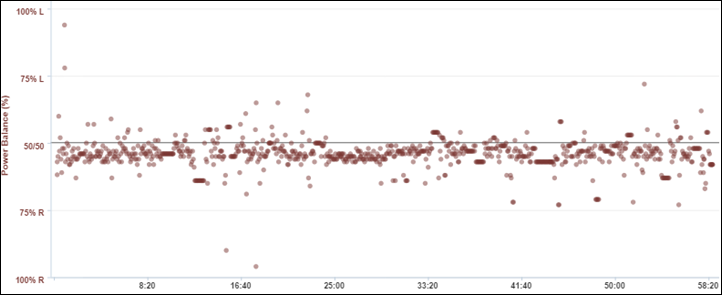
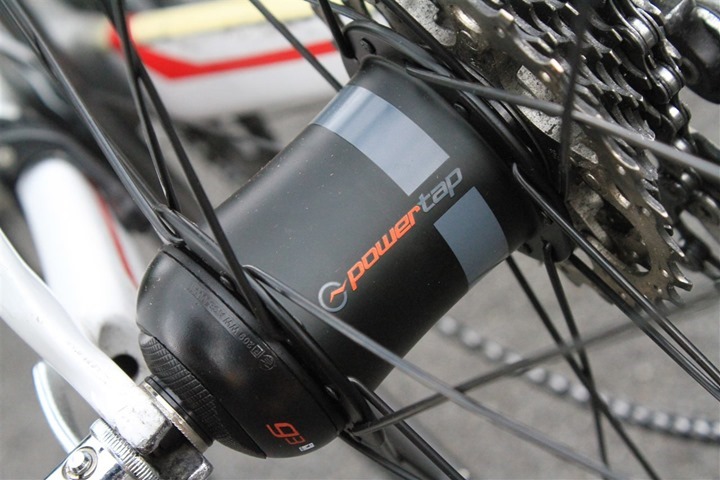
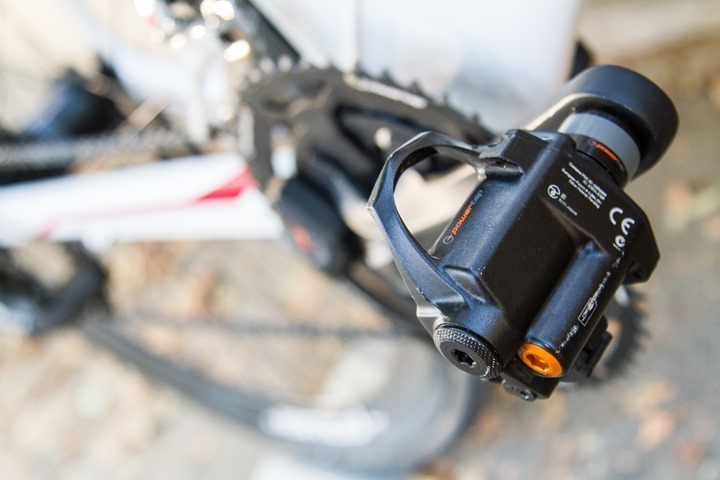
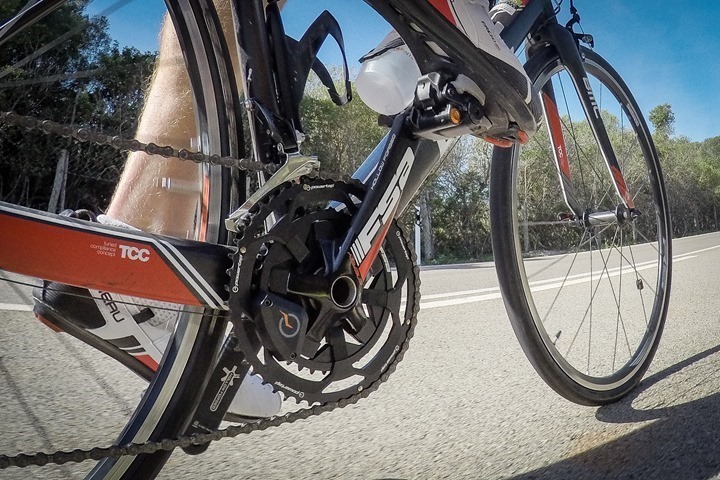
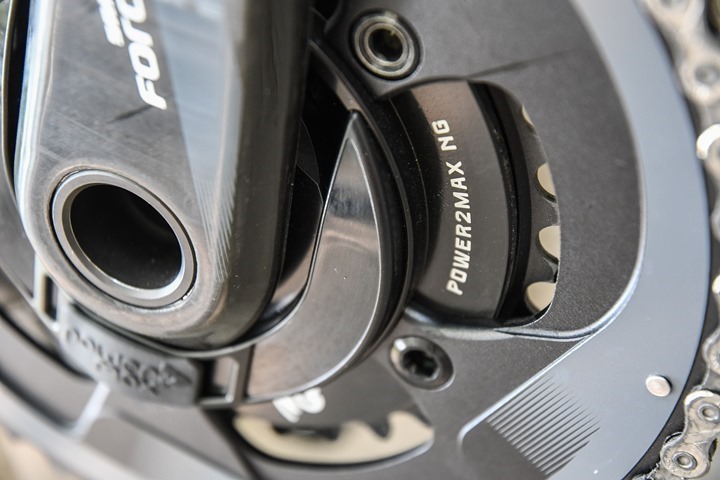

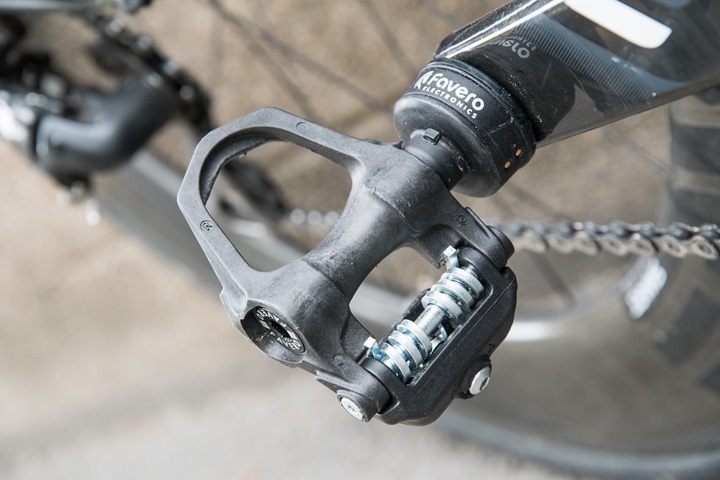
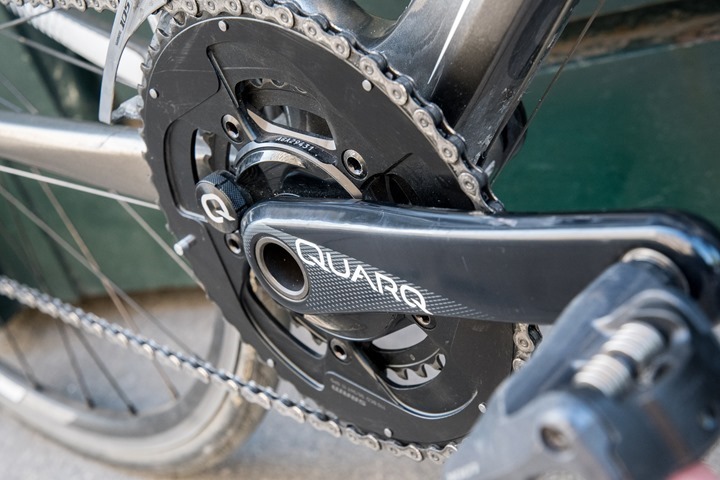
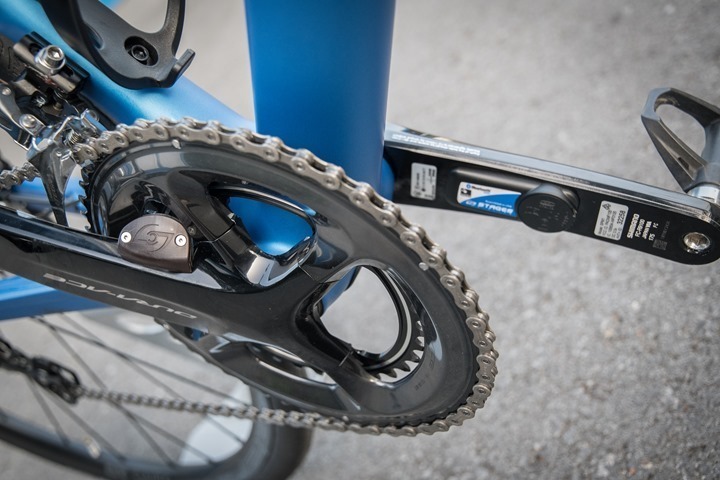
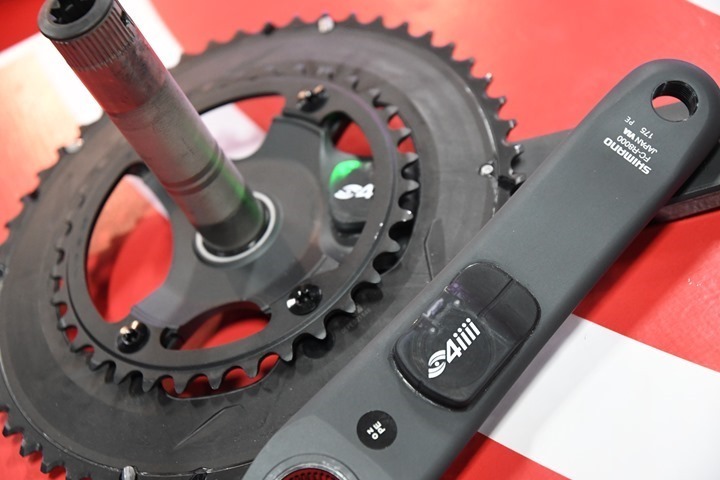
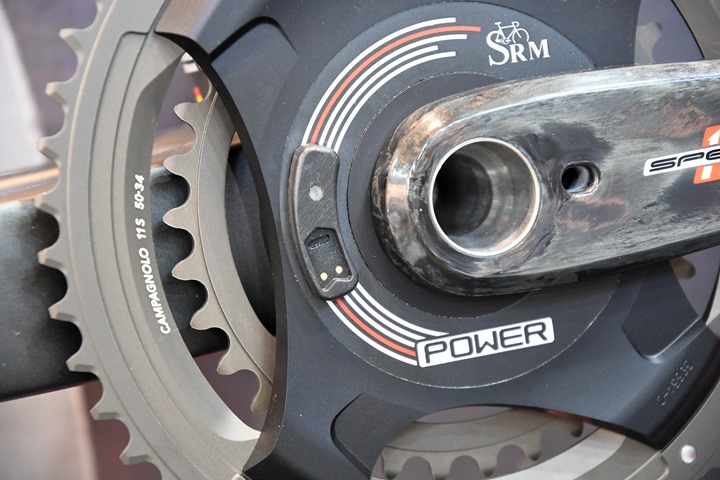
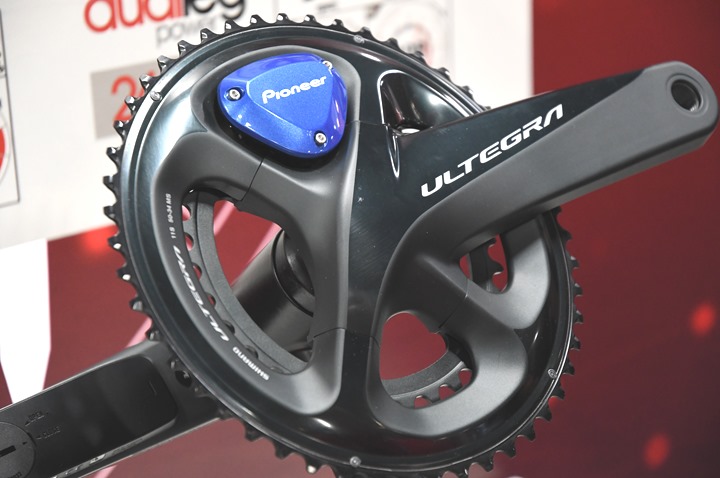
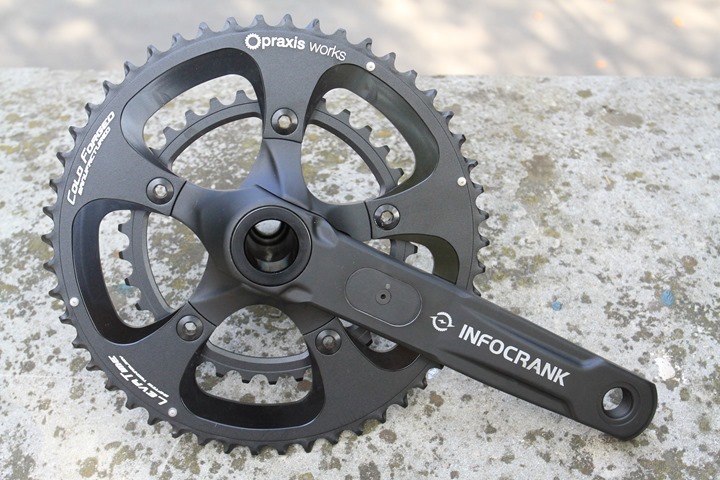
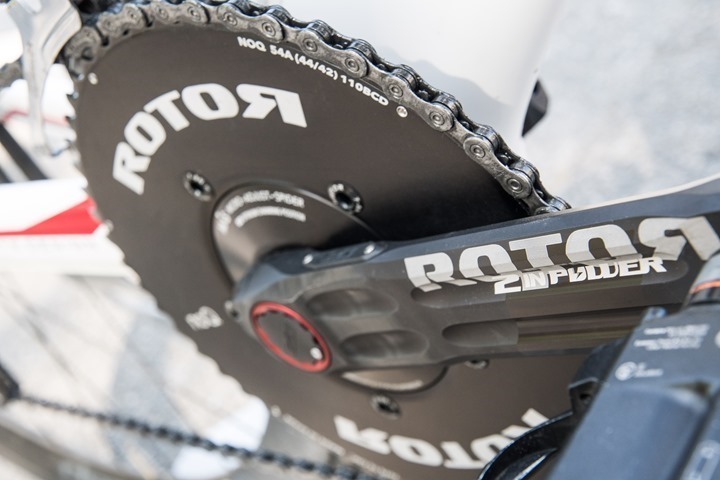
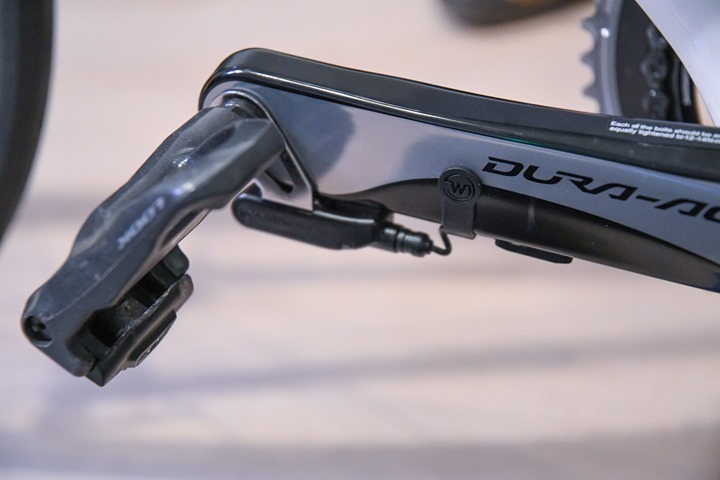
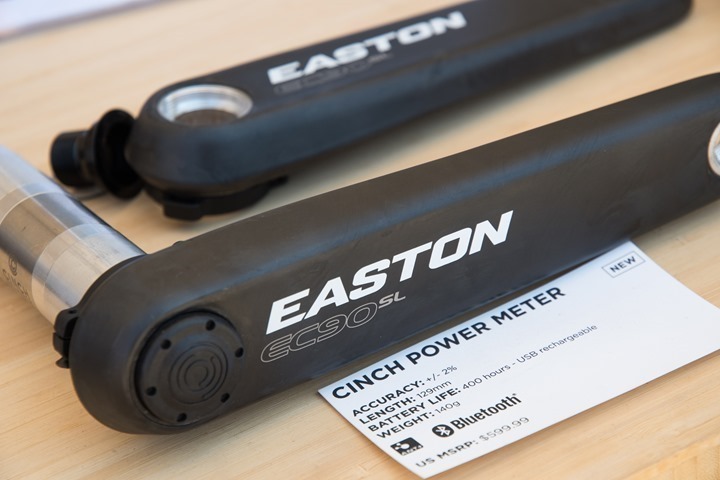
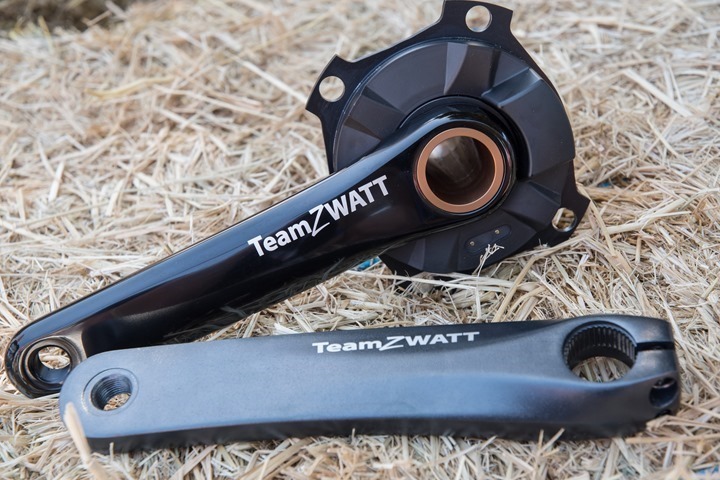
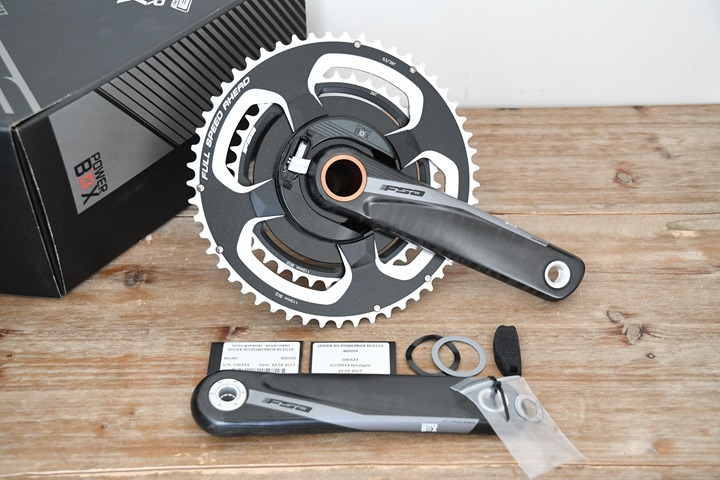
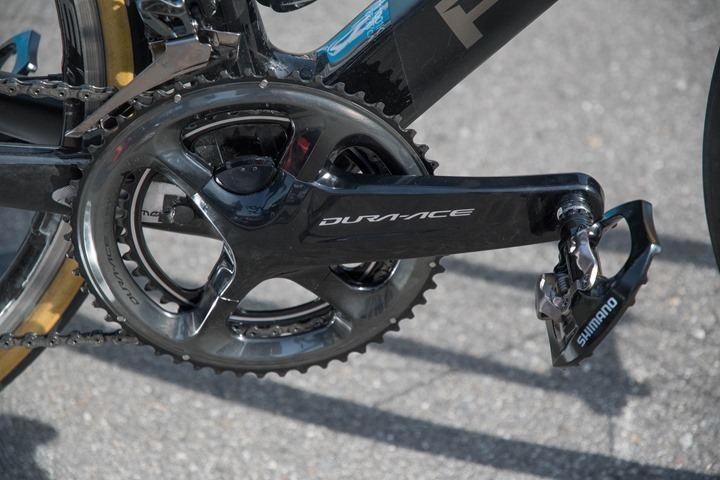
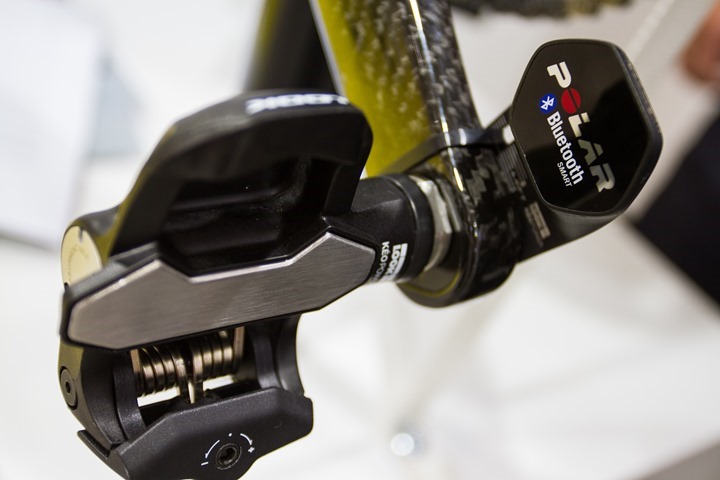
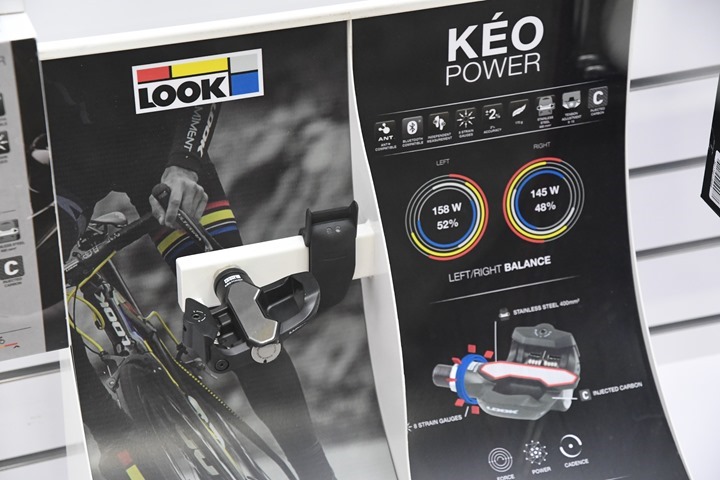
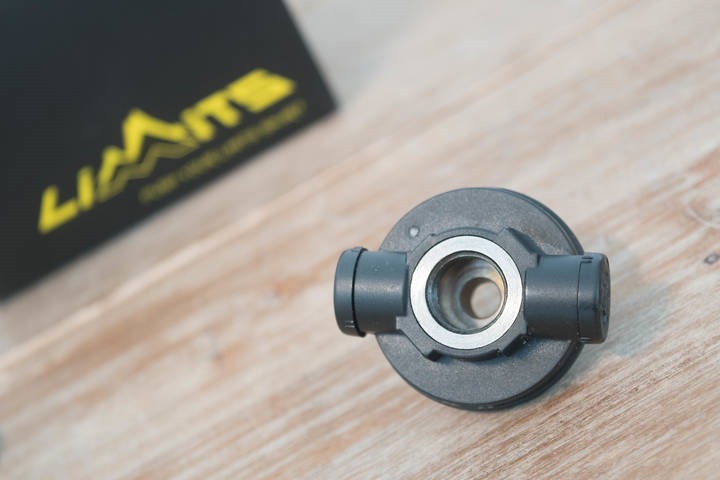
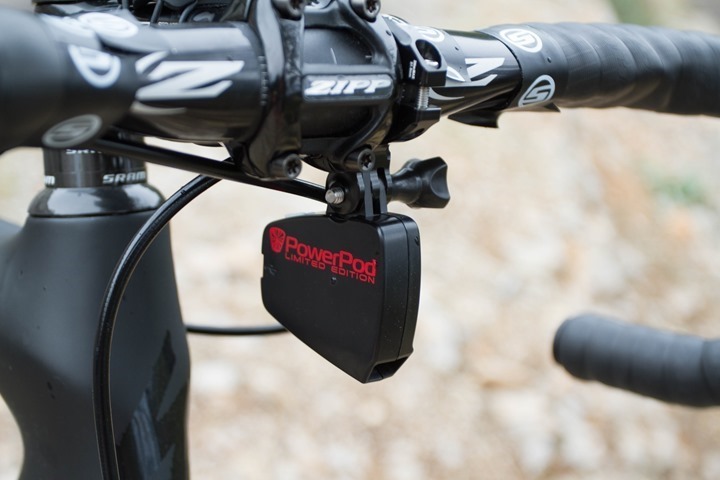
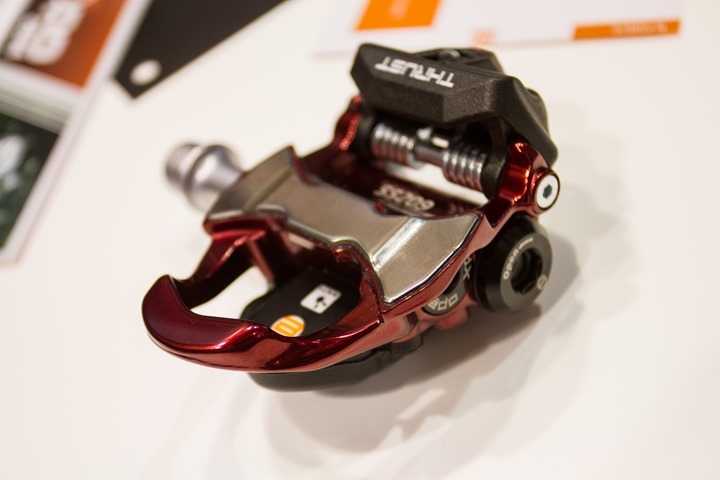


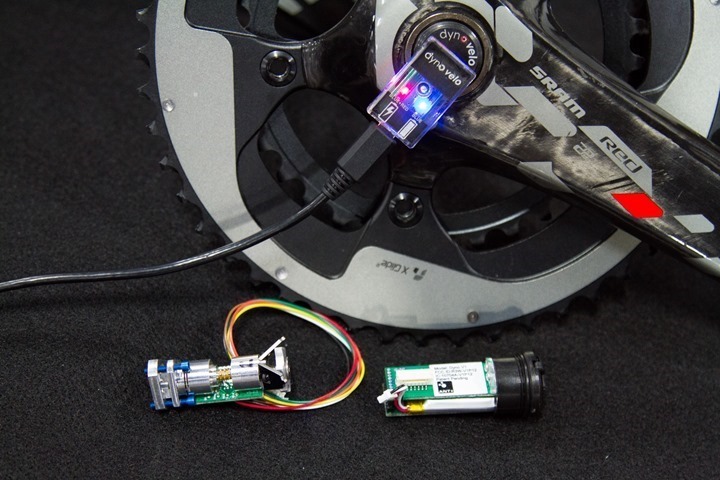

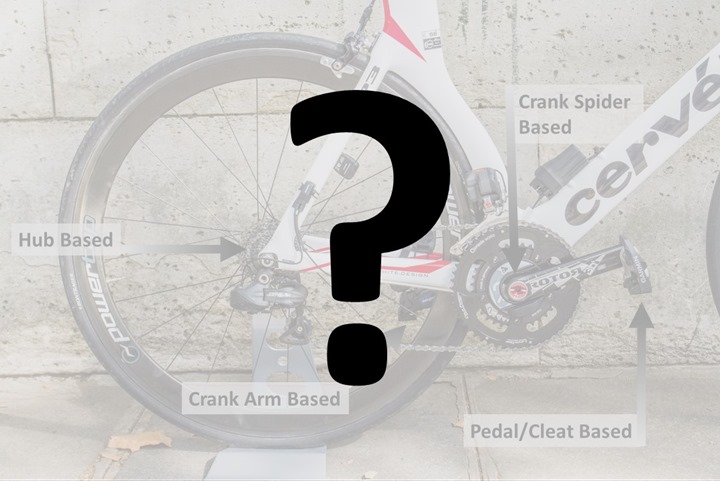

















Non-article UI note : the left nav doesn’t scroll (much), and there are now enough power meters that the bottom of the list is cut off by the social sharing links. So many power meters!
Yeah, I noticed as well after I hit publish. I might try and reformat things a bit…but indeed, toooo muuuuuchhhhh pooooooweeeeerrr!
Just a quick note on the Look Keo Power, I actually got two pairs updated. Yes, they used nearly 6 months, and the new firmware is far from perfect, but they are much easier to install than they used to be, and seem more stable. One gripe is that any crash still seems to break the wing of your base plate, causing you $180 in repair..
To quote from the article:
Additionally, they also have dual ANT+ & Bluetooth Smart transmission, which Vector lacks.
Do I need to comment further? :)
Grrr…I swept though so many times…thanks!
Heh. It’s the usual story – your mind knows how it _should_ read, so it misses these details. I’ve done the same sort of thing, far too many times; they only ever become obvious AFTER the button to publish the thing has been pressed…
Don’t sweat it. And thanks for all the work you put in.
Ray, can you clarify comments on 4iiii left/ right, I interpreted them to mean you have not tried the left right setup?
“If the dual left/right version that’s shipping momentarily is as accurate as the left-only version – then that’s a very
solid option in the market. I just haven’t tried that yet on a production unit.”
But in the next paragraph, you link to your testing of the left/right unit.
I meant to add the word ‘Podium’ in there. I haven’t tried that edition yet. Cleaned it up a bit, thanks!
as someone new to power meters, i settled in for a powerpod for now, while waiting for the other power meters to drop prices (fingers crossed)
I use a PowerPod on my commuting bike, mainly because of a lack of other options. The bike’s Pinion bottom bracket/transmission doesn’t accept a crank arm swap and the Gates Carbon belt doesn’t allow for a different hub. I could use a pedal power meter, but prefer MTB pedals for commuting. On the plus side, the PowerPod seems to be working. I doubt that it compensates for the power drain of studded tires in the winter, though. :-)
I thought about this a little more and realized that coasting probably gives the PowerPod an opportunity to calculate what kind of power drain (or drag) you are fighting against, regardless of the tire choice. I take back my previous comment. Looking forward to seeing what else these guys can come up with.
Wonder how accurate the powerpod is in the wind. On my rides against the wind it shows very low power despite my hr and effort levels soaring and with the wind I become a power champ despite soft peddling.
Ray, any idea when Clever Training’s next big sale event will happen? Last time it was in Spring, but unfortunately I missed it.
I got a note yesterday from Clever Training saying that a VIP perk would be “coming soon”. (9th of November 2017 was the date given.) No indication as to what that perk would be, though. Might be a sale. Might be something else. Can’t say for certain at this stage.
Ask and you shall receive! It opens today, get it while it’s hot! link to dcrainmaker.com
(Seriously, I’d place orders earlier rather than later, partially because of avoiding backorder type issues, but partially just because it’s safer to ensure you get a deal. You can always cancel if you change your mind.)
I’ve been using the Easton Cinch with EC90SL Cranks on the cross bike this cross season. Have no complaints. There’s probably 6 other guys running the same combo this season. Battery life is super long.
Nice, good to hear!
An excellent discussion recently on the Cycling Tips podcast focussing on power metre accuracy suggesting the devil’s in the detail.
Yeah, there’s some good discussion in there (the one from a bit back if I remember), but I think the vendors made some statements that simply aren’t real, which clouded a bit of the conversation. The Cycling Tips guys were trying to remain impartial, but I’d have called the vendors out on it, because some statements were BS.
This is going to be a highly popular blog, so maybe a small re-wording of the: “Vector 3 is now totally portable with no pedal wrench required”. I assume you are referring to the _torque_ wrench?? (And not the fact that they’ll fit just fine in the suitcase with no wrench at all….)
4 out of 5 torque wrenches agree! The other one…my brain farted on. Thanks!
:-)
On the topic of V3. Do you see Garmin do an upgrade/trade-in deal for V1/V2->V3, once the initial demand is down some???
I have the old original Vectors, and have massive issues with the “bearings” crapping out. Have had them replaced 2 or 3 times already, which is nice of Garmin, but annoying to have to do…
I asked a while back at launch and it didn’t sound like there was anything planned for upgrade/etc. :-/
A couple months ago my wife purchased a spin bike to use with the Peloton iOS app. We both are using this for cross training during the winter months. We both are enjoying the app- they have Power Training as a type of spin class you can do. With a entire program for you for power training. This is no problem if you have the peloton bike (they calculate your output – no real power meter on those bikes from what I can tell), but we are using the app so we need a power meter. We are looking to have an iOS app show us in real time our output and cadence and also save the output graph. I was thinking the Garmin Vector 3 would be a good option. Which other ones from above would be appropriate as well? We do not want to buy a head unit. Also would you recommend the single Vector 3 or dual? We were thinking dual- but would this work very well using an iPhone? Thank you for your help with this!
Vector 3 dual works well as far as pedal based goes for apps, because on BT it properly funnels dual power into a single power signal. I know Favero and I’m pretty sure the P1’s too show per-leg on BT for most apps, so you end up having to pick one or the other.
That said, I prefer dual over single most of the time.
That’s cool on Peloton working with powers, I was unaware of that…now you’ve got me tempted!
Thank you for the information! The Peloton instructor that teaches Power training is Matt Wilpers (former D1 runner), he has the training program on his website: link to mattwilpers.com and link to docs.wixstatic.com I think using the app for $12.99/month is a good deal. We didn’t feel like the Peloton bike would be worth it for us, $39/month for the classes and $2,000+ for the bike. You have to sign the one year contract, and the app is not something we plan on using over the summer as we will be outdoors. We do not utilize live classes as we are MST and it seems like the live classes are more geared towards EST. We do not care about the leader board (which is based on power output – we have read complaints about the calibration of the bikes effects this, so the leader board isn’t the most accurate). Also choosing the classes on demand is a lot more convenient. The app has a 2 week free trial- we did the trial and found it to be very good. We bought a $240 bike on Amazon. I saw you were guessing within the next year there would be a lot more indoor bikes, so we will keep an eye on your site if we ever decide to upgrade. Though the cheap bike is working very well for us so far. Thank you for your detailed posts!
My PowerTap P1 pedals recently broke, so am thinking of buying a new pair. But it sounds like the Favero does basically the same thing, but is cheaper. Plus the cleats are the same too. Is there any reason to get the P1 over the Favero?
If you care about some of the advanced pedal metrics, the P1 has that. Also, it lacks pods (though is chubbier). The battery thing is purely personal preference: Rechargeable vs AAA. But yeah, it’s tough to argue with $200+ cheaper.
Hi Ray, Do you believe the metrics could be added by software update or is it physical issue with the pedal?
Cheers, Doug
Definitely. PowerTap hinted at doing Cycling Dynamics (per upcoming standard) in a recent tweet. And Favero could so so as well, though I haven’t chatted with them about it yet.
All based on this: link to dcrainmaker.com
I have had a Stages SC3 Indoor bike for two years with their left sided power meter. Fantastic indoor training bike. 3 months ago I got a Quarq Red for my outdoor bike. According to Garmin and Training Peaks, my peak power is nearly identical with both and my indoor and outdoor FTPs are very close, given the different conditions. Initially my L/R balance was 53%-47%, but over the last 2 weeks it is consistently 50/50. And I have already had one hip (right) replaced. I am impressed with both of these power meters. I got a great deal on the Quarq from my LBS on sale. I am waiting to hear about longevity of the Vector 3 pedals. I have not had any problems with either meter, but I do like the fact that I can call Stages and talk to someone (I did before the purchase and recently had questions about the Dash head unit and future compatibility with Komoot). I also called SRAM before the Quarq purchase and asked if it was worth getting an adapter to switch my BB30 bottom bracket to GXP for future compatibility with a new bike, and the answer was that they don’t recommend using BB adapters due to possible loss of PM accuracy and the extra weight. Customer support matters, too.
Ray, there is an option to turn on/off auto-zeroing in Power2Max NG (perhaps in ECO also):
#1: in the Garmin head unit, make a zero offset calibration manually, after go to sensor details and there is an auto-zeroing on/off toggle (without calibration this toggle is not exist)
#2: the Power2Max released last week their android app in Play Store which is able to update/upgrade your NG/NG Eco/PowerBox firmwares and features, and there is a setting menu where You can turn on/off the auto-zeroing through BT also.
Ahh, cool, I hadn’t seen the Android app yet (since it just came out last week and I primarily use iOS and don’t have an NG non-ECO unit anymore).
As for the auto zero option, good to know, I don’t remember that being there way before last winter. I’ll have to see if something got tweaked there.
Meanwhile i asked a friend who has Eco and this option is exist at there also!
just wanted to drop in a give thumbs-up to the PowerPod guys. I’ve had a couple of issues and each time, I got a really quick, friendly reply via their support e-mail that solved my problem. I also like the idea that it “self-repairs/self-calibrates” after a few minutes.
How much do you charge for random numbers?
And how much more for dual sided random numbers?
Typical random number charge is one penny per second of data. For double randomness, I give a discounted rate of 1.75 cents per second.
End of 2017 and still no love for spd, time or speedplay cleats power meters.
Limits power meter it’s a smart idea. You can move it from your road bike to the mountain bike and use pedals that aren’t supported until now by pedal based power meters (spd, time, speedplay…). I hope they solve the problems in the second version (little probability) or other major brand make a similar interchangeable power meter.
As I know, to use the Powerpod with an indoor trainer, you have to choose your trainer power curve in the Isaac software, and then the Powerpod estimates your indoor power from your speed. There’s an Android app called “PowerIT” that can do the same for a few bucks. It can estimates your power based on a known power curve and broadcast it via ant+ to your Garmin head unit. You only need an Android smartphone with Ant+ (some Samsung and Sony smartphones) or use a usb OTG ant+ dongle. I’ve been using it for last 2 years and works like a charm.
Hi Ray,
Regarding your comments about the Look Keo power pedal, I actually upgraded from polar earlier this year and sent them back to Look via the UK distributor. While they took just over 2 months to come back that wasn’t an issue due to a serious injury as I wasn’t riding my bike then.
Compared to the polar keo power pedals, the installation is pretty much the same but the redesigned pods don’t use zip ties and are easier to put on and off for recharging etc. (each charge is about 150hrs worth of use). They self calibrate and have been accurate for nearly all of the time, the only time they weren’t was when I hired a bike with rotor cranks, they don’t work with them, or I couldn’t get them set up correctly.
In use they are great, easily sync’s with my polar v650 using BLE smart and also via Ant+ to zwift simultaneously. The metrics you get are more than enough for my analysis and left/right balance is key at the moment due to my back injury. I haven’t tried the funky force analysis yet though.
In short, they are fit for my requirements and I like them.
Currently I’ve 3 quarq power meters and they’ve always been great. The only time I had a problem quarq were very good indeed about supporting it with a replacement unit.
worth factoring that in.
(although my next power meter might be vector 3 if they come out with a shimano kit)
About the Look pedals: I handed mine over to my local bike shop for an upgrade on Jan 23rd (!) and still did not get them back. I called the Austrian distributor about once a month and they either said “in two weeks” or “Look have some problems with the accuracy of the power meter”. I contacted Look on facebook (since they did not answer on my mails), but up until I wrote them that I want my old pedals back immediately I never got a proper answer. Now they wrote that new pedals are on the way. I don’t believe that until I have them in my hands. I hope it was worth the wait and that they do work with Rotor cranks. The old ones did so at least…
Hi Ray. Have you heard any more about the Avio power meter? They seem to have test units out but none for general sale. Is there any reason why they aren’t in the “Unreleased” section?
Thanks for the reminder, just e-mailed them back. :)
As for not being in ‘unreleased’…no other reason than it skipped my mind (mostly as I hadn’t written a standalone post on them, which is how I triple-check against brain farts). If I have a call this week with them, I’ll circle back and add them in ASAP.
Wow! It’s when you bring it all together like this that your contribution to this community is shown for it’s impressive breadth and quality. A BIG THANK YOU for all you do. Based on your review earlier this year, I’ve been riding with a P2M NG (acquired pre-ECO) and have been very happy with it. Prior to that I had a PowerTap G1 which went with the wheel when that bike was sold (so much for N+1). I tried the PowerPod and that was a big fail for me. I never managed to get it to communicate with my Garmin Edge 1000. I have liked the Vector pedals but have been stymied by what appear to be consistent compatibility issues with S-Works Venge and Tarmac bikes. Their configurator keeps telling me they won’t fit my bikes. Overall, I remain confused about the whole Ant+/BLE issue, notably with regard to BLE. Both my P2M NG power meter and Elite Direto Trainer I’m using have BLE capability which does not want to connect (using the BLE protocol) to anything. When it comes to using software like BigRingVR, it’s Ant+ that seems to be the only connection recognized. I must be missing something…
Thank you Ray for your effort. You simplify our selection with your reviews and annual buyer’s guides.
Unfortunately I have no easy decision. I have 3 bikes: a mtb with spd pedals and 135mm rear hub, a road bike with spd sl pedals and 130mm rear hub and another bike with spd that I use in a dumb indoor trainer. I have read the whole post, but I can’t find any power meter that can be interchangeable between these bikes, except the Limits that didn’t works.
¿What can be the cheapest option to have power on the 3 bikes? Pedal based aren’t compatible, crank/chainring based aren’t easily interchangeable. If I buy a road wheel with powertap to use in 2 bikes (road and indoor) I’ll have to change the tire every time a swap the wheel and I need to buy another powermeter for the mtb.
Finally Powerpod could be accurate on the road, but I’m not sure of its accuracy on rought/dusty terrain and indoors.
Powerpod made a software update quite a while ago that deals with rough terrain by dynamically changing their model. (Ray, didn’t you retry it on your favorite cobble section to see whether it improved the inaccuracy you were seeing there?) I have a Powerpod and three bikes, one a mountain bike, and I live in a place (Central Pennsylvania) where I regularly mountain bike. I have nothing to compare the Powerpod with, but the results on the mountain bike (mostly gravel and double track, rarely single track) seem reasonable most of the time.
As for indoors, they use tables of power vs speed on various trainers, and you have to set it up beforehand using Isaac. I don’t bother when I’m on my Kreitler rollers, and my STAC Zero provides power.
Am I right to say that the Garmin Vector 3 wouldn’t work with MTB shoes? I do more ‘gravel’ type riding on gravel / limestone trails and looking to do more gravel grinders in 2018, thus normally go for a MTB shoe on my road / gravel bike. I love everything the Vector offers but not sure if that would work with what I want to do.
Is there a recommendation for gravel bikes / MTB shoes? Is there a pedal system that would work?
Thanks as always Ray for the recommendations, I’ve been eagerly awaiting this post!
Adam
You are correct – Vectors are only compatible with Look Keo 3 bolt cleats, so need road shoes. I don’t think that there are any MTB pedal based systems – you’d have to look at the crank or spider ones. I know Stages do Shimano MTB cranks as well as road ones, and I’m sure that’s not unique.
On the P1 pedals
” (I love that I can get a replacement anywhere in the world at any tiny little store on a route if need be). ”
Except thats not true though is it? They have to be the lithium batteries that are quite a bit harder to find -no?
You can use non-lithium batteries, it’s just not recommended – primarily longer term as the way the battery dies it can lead to uneven power.
I thought that it led to shorting and returns?
It can, but I largely haven’t heard that be the case.
Got a new bike 2 months ago. Old road bike has a powertap hub, new road bike has disc brakes, so can’t use powertap hub solution. Read the entire 2016 report, and eagerly awaited another fantastic ‘treatise’ on power meters for 2017. (Thanks again for your awesome work, DC!)
Now I am just more confused. I am an old guy, just really want a power meter for my indoor winter training. Don’t need anything high end, just want it to talk to trainer road and my tacx ‘smart trainer’ to control the resistance. It would be nice to see power info on my 810 when I ride outside, but not critical.
I normally use stb cleats (just cheap as I can use the same shoes for spin classes but I also have shoes with a heel so I can walk around when I go somewhere on my rides), so I have stb pedals, but I guess I could change this if I need to.
So I am looking for the best bang for the buck, don’t really want to spend much, want it to be reliable, easy to setup, and easy to interface. I am very technical, so I can put up with doing things once, but don’t want to continually have to mess with things, just want to climb onto my bike and go. The Powertap hub was great in this regard. I am thinking I want a crank arm based solution? It seems changing the spyder on a new bike wouldn’t make sense?
Anybody have the same requirements, or want to give a recommendation. Thanks!
FYI FWIW The $40 power meter. It is really a bargain though. I may buy one to zwift on a spin cycle while traveling. link to getsetup.zwift.com
Hi DC Rainmaker, I ask you kindly if you can tell me the ROTOR 2INPOWER error margin. SRM has ±1%, POWER2MAX NG ±1% (ECO ±2%)… ROTOR 2INPOWER instead?
Thanks so much.
A couple of quibbles with the Favero Assioma synopsis:
– Cleats: The Assioma documentation, and my own experience, indicate that these are completely compatible with regular Look Keo cleats. You indicate that a disadvantage is that these pedals need special cleats, which I have not found to be the case.
– Attachment: I would note one small advantage these pedals have over the Garmin V3 is that you can attach them with an Allen wrench. No need to travel with a pedal wrench (even the cool multi-tool you mentioned in your Garmin review) and you can spin them on a lot faster.
Also, regarding cycling dynamics: it’s (theoretically) possible (though maybe unlikely) that other pedal units will be able to generate cycling dynamic data now that Garmin has opened up the API. Or did I misread that?
RE: Cleats, they actually are technically different. I do agree that for the most part they’ll work cross-platform, but not always. I’ve found that as they wear, they become less reliable cross-pedal than regular cleats. I noted it because I always found it funny that people dinged P1 for using those cleats, but overlooked it for Favero. They’re identical and sourced from the same place. Again, not personally a huge deal to me.
RE: Attachment, that is true – I don’t disagree there at all.
RE: Cycling Dynamics: Correct, it’s definitely possible. I think we’ll see it from companies like Pioneer and PowerTap, since they’ve already got similar functionality. But I think for others it may be more of a leap than they’re willing to make.
Interesting to see that you are still recommending the PowerCal strap. I have one, and take it with me every time I travel so that I can train on a hotel or gym bike.
As you say its not super accurate, but its good enough to pair with my phone and use the TrainerRoad app for workouts. And way easier than installing pedals on hotel gym bikes.
Every now and then I use at home when I’m riding on my smart trainer to see how closely it matches – and its normally within 10% accuracy. That’s good enough for me as a cheap portable option to keep training when I’m travelling.
Hi Ray,
Thank you for this massive overview, it is very helpful in understanding the powermeter market of today.
My question is, what is the best powermeter for a campagnolo equipped bike. And what is the cheapest option?
I am looking for a new bike and love the campagnolo way of shifting, but they are not compatible with all the cheaper power meter options out there is it?
My dilemma is, should I go for the best bike I prefer or should I buy a bike that I can easily upgrade?
Stages does have a Campy option out there now, as does Power2Max on their NG lineup. So both options to consider.
tks
there is too many options today ?, but I would always chose a proved solution
But once you have purchased the power meter, you also need to buy software to manage the data? make a subscription? or there is something free online (golden cheetat is offline only)
Velohero? Wattsboard? Training Peaks? Other?
Garmin Connect is free (for Garmin device users?), and will let you make use of the power data. Other platforms generally view power data as a premium feature, and charge for it.
But you don’t really need much to make reasonable use of power. When I go out and do a long distance triathlon, I’m doing the bike leg by power: what’s my FTP, what percentage of that should I be doing (~80% of FTP for a half Ironman), keep my effort at about that level. All I need to do to ensure I’m doing that effectively is undergo an FTP test a month or two out from the race (to give my body time to recover before the race; an FTP test is full on.)
The question you need to pose, in other words, is not “how do I manage this data?” It’s “Why am I buying a power meter? What data do I want out of it?” Once you know what you intend to do with the data, you can make a more informed decision on what you need to manage it.
Ordered the Kickr Snap and received shipment notification today.
Thanks for the headsup.
Eric
Great overview of the powermeter market. I’m about to buy a powermeter to my Tarmac S-Works. My initial choice was the Quarq DZero. My LBS mentioned that Specialized have a dual side powermeter in the pipeline. He expected release early 2018. Do you have any information about this powermeter?
Nothing that I can share at this time. Sorry!
Hey Micke,
I was told the same thing for my new tarmac which has the sworks cranks. Curious to know if you have found out anything else? I have looked and looked and it doesn’t seem like there is any info. And I would think Ray would be in the know on this one.
Hi Alan
Not so much information to share. Little bit of Googling gave me this: link to bicycling.co.za
My LBS gave me an indicative price of SEK 13.000 (USD 1.500), bottom bracket with S-Works crankset. Probably less in USD. Bike parts are expensive in Sweden.
Hey Micke, I ended up contacting Specialized directly on this and it looks like there was some sort of production issue. Although the wouldn’t give me exact details it doesn’t sound like they are releasing the power meter at least until August of 2018
Ray, this has been out for almost a week and I still cant figure what the table at the end of the article is for. Did you perhaps enter the wrong code for the power meter guide? Cause I would really like a table.
Just a coding error actually (which behind the scenes flags this post as the PM recommendations guide for 2017 in the database). Fixed, thanks! That said, you can compare all products in the product database here, which has a special section for power meters: link to dcrainmaker.com
Do you think a Pioneer single-crank PM would interface and work with an SRM PC8 head unit? I have SRM cranks on a few other bikes and just move the PC8 to the right bike when needed. This would be a convenient option for obtaining power on an Ultra-equipped training bike.
Thank you Ray for providing such a great source if info for all my cycling tech needs!
I have a question:
What I have been thinking (perhaps hoping) is that given a pair of Shimano Ultegra pedals (or 105s) I could purchase the “Garmin Vector S to Vector 2S Upgrade Kit” and the “Garmin Vector Shimano Ultegra Pedal Cartridges” for about £160 (£70 + £90) and have myself a single sided power meter at a very low cost.
This seems too good to be true so please could someone clarify where I am getting muddled.
Thanks, Sam
That does not work, you need the left side master pedal, the upgrade kit only has the right, slave pedal.
Ignore that, I see what you are doing now… I don’t think you would have the axle with the strain gauges?
Correct, you’re still missing the strain gauge part. (Don’t worry, others have asked before as well)
Thanks for the responses.
Yep makes sense, thought the strain gauge was in the cartridge. Oh well, I tried.
Hey Ray,
Have Shimano sent you the PM yet? ;o
Nope, not yet.
Refurbished power tap P1 570$ is it good deal?
Yup, awesome deal.
Another advantage of the P1s (and why I bought them over the Vector 3) is that they’re the only one of the three pedal meters not to have a rider weight limit on them. Favero has a more generous 265lb limit, but Garmin’s remains pretty ridiculously low, imo (230lb, up from 200 for V1/2s). If you have a typical cyclist body type it won’t matter much, but for us Clydesdales who want pedal meters, it might make a big difference.
May not be 100% right forum to ask, but…..
I’ve had an original Quarq for years, and it’s still going strong. However, the time has come for a new bike, and I’m going for a Cannondale Synapse. Ideally I wanted a Quarq, but apparently there is an issue with the Cannondale BB’s being 4narrower. Anyone know anything about this, or recommend my best option? Apparently you can’t get the Cannondale Quarq spider any more.
I use Shimano SPDs and have multiple bikes, so don’t want to go Vector.
Hmm, I may have answered my own question… link to quarq.zendesk.com Have now gone back to bike shop who told me it wouldn’t work and sent them that link and they seem a bit happier to take my money.
FWIW the strain gauges used in most of these devices have become so cheap, less than $20, that prices should continue downward because the transmitter part should also be dropping. What leaves me wondering is why they are crank specific ie; you have to use a specific crank. Effort is effort and strain should become normalized if you calibrate with a finite force like the water bags used by Watteam. Once that calibration is done it should be good to go. For those of us who don’t use Shimano the powermeter world is very limited.
Question on the RPM2 insoles. I’m looking for a cycling power meter for use in hotel gyms (primarily for zwift) that’s more accurate moment-to-moment than the PowerCal. I could deal with the RPM2’s lack of resale value if I knew its numbers were accurate. However, I can’t find any reviews or analysis online. Your mention here is one of the few I can find. Have you seen any accuracy data or comparisons?
Hopefully somebody can point me in the right direction. I have a bike with 10-speed Campagnolo Record, English bottom bracket, 170mm cranks, and 53/39 rings. I’m looking to both get a power meter and switch to 52/36 rings. 165mm cranks would be nice, if possible. Clearly I’ll need an entirely new crankset because of the BCD. Any recommendations on a good future-proof route or what my most cost-effective options might be?
Several options, but I’ve just bought my second Quarq powermeter, this one the DFour. That will allow you to run any of the shimano 4 bolt rings, and so you can run the ‘compact’ 50 up to 53 without changing the ring – it’ s a common 110 BCD. I run the 52/36 that you’re suggesting and have to say I’m really impressed at the range after swapping from a 9 speed 12-25 on 53/39. Also comes in 165mm.
However, many would suggest that the vector would give you the chance to change in the future, not just if you change chainrings, but if you get a new bike with BB30 then you could move over without changing cranks again. Personally I swapped the powermeter between road and timetrial and so it was quicker to swap cranks than both pedals, but it’s horses for courses.
Nowadays, there’s a lot of options out there, and very very few bad ones.
Thanks for the reply. Doing a little more digging, I think the most economical and versatile option for me is going to be the power2max NGeco with the Rotor 3D+ cranks. Come in a huge range of lengths, BB30 but works on a BSA frame with Rotor’s BSA30 BB, and 110 BCD also. And quite a bit cheaper than the Quarq options I think.
Doing a little more reading, I could also go with the power2max FSA K-Force Light in BB386EVO, which might be even more versatile.
S type power2max vs FSA Powerbox. Better to get the newer powerbox or what was a better PM when released (with rotor 3d+ if that makes a difference)
Just a heads up: the link in the beginning of the article to training peaks seems to be broken.
1) Are there any studies comparing the accuracies of the power meters in a reasonably objective way? I’m always critical of accuracy data/claims by the manufacturer, as they obviously aren’t unbiased. Is there a “hands-down most accurate” power meter, and if so, which one?
2) Given groups of comparably accurate power meters, which one is the best “bang for the buck”?
Thanks Ray
1) See above.
2) See above.
;-)
great, thanks so much!
I had an older SRM for I got from a local used bike parts forum. Worked great, but would never pay new price! Used it for a year and then sold it for a little more than what i bought it for!
I checked out the Pioneer website and they just dropped their power meter prices by $200 so their dual sided power meter is $800 if you send in your own cranks! Perfect timing since I was debating between Pioneer and 4iii except 4iii doesn’t support the Dura Ace 9100 cranks yet.
It looks like Pioneer made headunit a requirement for switching channels! I bought a lightly used PM and the button to switch channels no longer does anything. I confirmed this with Pioneer on the phone.
Really quite frustrating! Impacts used market too id imagine :(
Ray, first, thanks for the great, comprehensive power meter round-up post! I keep referring people to your site for the solid, down-to-earth and detailed equipment reviews, really appreciate your insights.
Question regarding Stages VS Pioneer: If not using the Pioneer head unit, is there any discernible advantage to the Pioneer now that Stages has dual? Also, I’ve heard Stages meters show measured avg and peak power under actual (meaning, other meters show power numbers more accurately, higher avg and peak for same rider theoretically); have you experienced this, or is it not a real issue? I’ve used Stages on several bikes, and haven’t compared to anything else, so I have no idea if this is a legit concern. I’m right now considering Pioneer left crank VS Stages left crank options on my TT bike, planning to go dual at some point in the future when finances allow.
Hello,
After reading your review, I decided to go to wheelbuilder.com and make some Zipp 808s with the Powertap G3 hub. I was waiting for my tax refund and bonus money to come in, (March 8th can’t get here fast enough) but while I was waiting, I saw the C1 chainring on sale for $350. I decided to get this as it was too good a price not to.
Now that I bought the C1, do I need to get the G3 hub on the Zipp wheels, or can I just get Zipp wheels? I would love to know your thoughts.
John
Just the wheels. The C1 will get you your power information and is probably a touch more accurate since measuring power at the crank.
Wish C1 was compatible with more crank sets–I was looking at picking one up for this great price but would’ve required me buying a new crank set :(
Hi Ray,
Is it common that we have to calibrate everytime we go ride the bike to get accurate power? I am using Zimanox from Zwatt, and it is literally inaccurate every single time if not calibrate, and each calibration should be after warm up (10-15 mins) otherwise it is also inaccurate by at least 30w at all power range. It is also weird that each time calibration it show off set number 38-39-40-42 and if it is 40 then power seems to be more correct than 38. This is really a problem for triathlon race, when we have to put the bike in 1 night before.
Hi Duong-
It used to be that you absolutely had to calibrate a power meter (technically, a zero offset) each time you rode, usually 10-15 minutes into things. Mostly due to temp comp shifts.
These days I still do recommend folks do a zero offset prior to each ride, but that’s mostly to keep an eye on that value to know if something goes out the window – it means your power values might soon too.
However, for the most part most units have active or passive temp compensation within them, so the temp comp concerns are largely gone (with some minor exceptions).
In the case of the Zimonox, what other power meter are you comparing it to?
Cheers.
Hi Ray, I compared it with 2 trainers Vortex and Hammer, and similar issues happened with both. I rode the trainer at 30w (ant+ to edge 520) and see the zimanox reported “0” value which is ridiculous (Via bluetooth to my phone and to ant+ to my 920xt). With each calibration, i have much more confident if it said offset value -40 or -41 than -38.
Hi Duong,
I have the same problem with my Zimanox – underreporting power vs warmed up Tacx Genius:
– Zimanox 20min power: 206w
– Tacx 20 min power: 143w
Zero offsetting doesn’t improve readings for me.
What I’ve noticed is that if I try to do circular pedaling, Zimanox power is closer to Tacx.
I suspect a problem with calculation of negative torque (from right leg), the less torque efectiveness I get, the smaller reported power.
This gets really bad when riding on platform pedals.
I’ve uploaded Tacx Genius (teal) vs Zimanox (magenta) power here: link to ibb.co
Imho tracking seems quite decent, but the scaling is non-linear and can’t be corrected easily via zwatt app.
I see similar fluctuations between my ZIMANOX and a powertap G3 wheel. Calibration seems to help, but it has to be at oudoor temperature, important here in the winter. I don’t find the precision satisfactory. Some rides have been spot on, others 20% off to both sides. Are other left-arm meters having similar problems?
Would really like to see someone make a standard SPD (non-road) pedal based system. I do gravel races and bikepacking, and that would be perfect. Anything on the horizon Ray?
Ray,
If someone is on a budget with a ceiling of $600US would you recommend they spend it on a more flexible/movable single sided pedal system with the potential of upgrading to dual sided later or something less flexible like a Power2Max NG ECO to get dual sided right away, or even a Stages despite it’s single sided shortcoming.
Ray,
Firstly – thanks! great review.
I remain curious about one thing though – durability. Is there any reason to believe that one form of power meter would be more durable than another? For instance, is there more that can wear out/go wrong in a pedal-based versus a crank-based? Is the warranty longer/better for one kind or another, or one manufacturer or another.
Thanks!
Not really. Some might argue crank based is in a more durable area than pedal based, but practically speaking I find that doesn’t much matter for most people unless their racing crits.
As for warranty/etc, in general you’ll find most power meter companies are quite good. Though I would probably look to ensure that the power meter company you select has service centers in your region. For example, PowerTap doesn’t have a full service center in Europe, so things end up going back to the US – which is a pain in the butt for people there.
And inversely, Power2Max doesn’t have one in the US, so things have to go back to Europe.
Hi, I narrowed my choice to NG ECO and Quarq DFour. Which one would you recommend? Do you know if Quarq has assistance in Europe?
Both are great units.
I know Quarq has service centers via SRAM in Europe, but I don’t know precisely how the support desk flows.
Hi,
regarding XCadey power meter: link to youtube.com
Maybe GPLama was extremally lucky? His cons are also kind of strong.
A comment on the P1’s.
I wouldn’t recommend these for anywhere hot/humid.
Customer service has been fantastic from Powertap with multiple sets of replacement pedals, however I am now on my 4th set in 2 years. The summer heat/humidity/condensation in Dubai seems to kill these pedals with 2 sets lasting less than 3 months.
I have heard this is not an isolated problem.
While working the units were great but I will be trying Vector 3’s for my next pedal based sensors. I have also used both a stages unit (bought the day before a race after P1’s failed) which is still going strong on a friends bike. I now use the P1’s solely through the winter and a Quarq Dfour that was bought just after release and has been spot on so far.
Which one would you recommend me? Stages dual vs Podiiium dual. Price is almost the same (950€ vs 999€). I already have a 4iiii precision left side that will use in another bike; can I train with the same zones for both options? Will be better to keep with 4iiii brand, or can I “mix” Stages in one bike and 4iiii in another, using the same zones?
Thanks.
Is the Podiiiium dual shipping yet?
In the 4iiii website shop it appears… but in Europe in all the shops, it appears to be in sotck about June or so :(. Given a same price (and not thinking about buying their propeteries heads unit), which one would you recommend me? Stages LR, 4iiii dual (when avalaible) or Pionner dual?
I’d really appreciate your opinion.
PS: I haven’t answered before, as it doesn’t allow me to tick the “notify me” case and I thought you haven’t answered.
Thanks for all the information. But I guess these are too much for me. Still looking for a powermeter which fully works with the Polar V650, is not Pedal-based and not too expansive (just doing „normal“ triathlon, so the super precise numbers are not that important, just in general looking forward to optimize the bike part)
Hey Ray,
Did you check this powermeter out?
Looks like a good deal but couldn’t get much info on that: link to youtube.com
Hang tight. :)
On Stages Left-Side only PM.
I’ve been using Stages Left Side 2nd ed. with Garmin 500, and I’ve seen many dropouts when Garmin sits on an out-front mount, but zero drop-outs when using BT (to smartphone, laptop, whatever)
If I want to have zero drop-outs in my setup I have to mount Garmin on stem or even on a top-tube where it sits right now.
Using DCR Analyzer I did one sample illustrating the problem:
link to analyze.dcrainmaker.com
BTW: yes, I already called Stages, and this is my replacement unit.
TL;DR: Stages? No Ant+, only BT.
So, been primarily a runner most of my life but finding myself buying new bikes, trainers, Zwifting, etc. this year. Having never trained with power I decided to jump in with mostly just one foot or leg but sometimes both feet. I purchased a used Powertap SL+ and wheel for an old road bike for $180, more on that later, a left only Watteam Powerbeat on Clever Training for $228 for my new road bike, and found a smashing deal on a Stages left only Sram on the Stages website for $280 shipped for my gravel bike. Having never had a power meter and only really using the Powertap, I’m unsure if it is working correctly plus waiting for a new hub for it. Just got the Powerbeat and Stages installed today. After seeing Phil Gaimon use the Powerbeat and Shane Miller’s review of the single, I jumped in on it. The Stages was just too good to pass up at $250 plus tax and shipping. Wishing I could ride right away but kids softball gets in the way. Nonetheless, when I first looked at power meters a few years ago the prices seemed staggering. Now, in just a few weeks I find myself with three for less than $700. Powerbeat set the floor at $259, $228 with VIP, some time ago but I suspect we are just seeing the beginning of the “Power Meter Wars”. With Powertap’s drops in prices and the clearance prices on the Stages website, it appears they are all scrambling. Now, if Ray is working with this IQ2 group in the Netherlands(????), I’m guessing we’ll see the other shoe, or in this case two legs, drop in price and the floor for a double sided will be near what a Powerbeat single is soon. So, it’s never been a better time to buy a power meter but I suspect it’s going to get even better. Thanks for all the great reviews Ray and tell us about this IQ2 thingy!! I need it to use your analyzer to test the others against each other. If you get a chance to come to Oklahoma you can’t train on climbs so much but you can in the wind. 35 to 50 mph predicted tomorrow. What fun!
So you would go with the NG ECO over the ROTOR?
Hi Ray, I’m seeing the vector 2’s on offer at the moment significantly undercutting even the Favero Assioma. I’m sure I read you say you still wouldn’t go for them, but the discount is as much under the assioma as the assioma is under the vector3’s. So still avoid even at that type of discount? Thanks.
I have the Vector 2. They’re a decent unit; they do what it says on the tin. Generally reliable, generally pretty accurate (as far as I know).
But.
I’m getting sick of this dance every time I take my bike somewhere remote for a race:
– Take off the pedal pods (2.5mm allen key). (#1)
– Take off the pedals (pedal wrench).
– Pack the bike.
– Travel.
– Unpack the bike.
– Put the pedals back on.
– Torque up the pedals to the right torque (torque wrench, crows’ foot adapter). (#2)
– Put the pedal pods back on. (#3)
– Go for a short ride, making sure I maintain cadence around 85-90 rpm for a couple of minutes, to set the installation angle (#4).
Items 1, 2, 3, and 4 marked above have to be done every time I need to take the pedals off for whatever reason. It’s not a deal breaker. It’s not impossible. But it does get annoying, and it’s why I plan on replacing the Vectors with a Quarq (there’s an added cost in doing so, yes, but I’m in a position where I can afford it.)
If you’re happy playing that game, then go for it; a cheap power meter is a cheap power meter, after all. The only other caveat is that the Vector 2 only does ANT+; you need to make sure that your head unit isn’t BLE only. (I actually consider ANT+ to be preferable on the power meter side to BLE, but that’s partially because I’m a bit of a weirdo – I usually have two head units running simultaneously on a ride. My Edge 520, for ease of visual checks, and my Forerunner 935, to keep tabs on all of my training in one place. BLE will only let you link a sensor to a single head unit at any given point in time.)
I agree with everything Stuart wrote.
But the biggest (or second biggest) reason that I’d not buy them now over Assioma is really the lack of Bluetooth Smart capabilities. More and more there are apps that require them (trainer apps primarily) to connect over BLE, and without that you’ll be locked out.
Now, if you only plan to use a Garmin device (or Wahoo device) going forward, and don’t see this as a 3-5 year purchase, but more as a 1-3 year purchase, and don’t mind the hassle of swapping….then, it’s not a bad deal. :)
Thanks guys, I won’t get dazzled by the price drops and think on on the Assioma v vector 3.
I’ve just moved to a Bolt, so I’ll wait for confirmation that those issues are ironed out, as cycling Dynamics not really relevant (yet). And get over the relative looks too ;)
Hi,
I’m planning to buy my first power meter. I only have one bike, so I don’t need to change it from bike to bike.
Cycling is a hobbie for me, but I’d like to improve my performance.
I think that I don’t need to expend a lot in the power meter, I just want usefull one.
My bike is an entry level carbon bike.
What power meter would you recommend for me?
Regards,
Juan
Might wanna put some kind of warning in about Limits now…
I’ve been waiting for my unit for 3 years, and they haven’t released any communication since June 2017. I know this article is pretty old now, but I think it was pretty obvious back in September 2017 that they were a scam, or at least had ambition beyond their capability.
Yeah, I think my tidbit up there in that section is pretty clear that one shouldn’t buy it for a slew of reasons.
An open letter to power meter manufacturers:
I’m an avid touring cyclist and a fitness data geek. I’m pretty sure I pull more watts hauling loaded panniers over mountains than I ever will on my weekend-warrior road bike, but I’m aware of no direct-force power meter option that will let me know for sure…
–*– There’s no 36-hole rear hub option that lets me keep a really strong real wheel for loaded touring.
–*– Look-style pedals don’t work for multi-day touring. No one wants to walk like a duck every time you stop at a cafe or ice cream shop.
–*– My bike has a 3×10 drivetrain for a wide gearing range and serviceability around the world. I’ve found no chainring or spider power meter for this configuration.
–*– Left crank only? Maybe, but Ray’s blog has turned me into a data purist about this configuration, and no one sells an option for my FSA Afterburner crank anyway.
Someone out there needs to offer a power meter to the ever-expanding touring cyclist community!
A—-
Ray, why would not recommend the single sided Rotor Inpower?
Hi Ray
I’ve enjoyed reading through the various reviews here. I’m looking for a replacement for my Vector 2 pedals which have been plagued with accuracy issues. When I reattach the pedals, the first 1-2 rides need serious “bedding-in” time before the Vectors give reliable readings, which has been a real issue when I’ve been travelling to races. I’m looking for something that is as accurate as poss. (without paying for SRM prices) and was thinking something crank-based as I don’t need to swap regularly from bike to bike. My LBS is recommending Infocranks, which they’ll do at a price that makes them directly comparable w. Stages dual-sided etc. Your comment on Infocranks above said other units were just as accurate and Infocranks is becoming uncompetitive. Is it just the price that’s your main concern (I don’t need BLE)? Put another way, if the different crank-based (fully left / right) products were all priced the same, and you just had to pick on reliability & accuracy, which one(s) would you pick?
I’m planning to get a crank arm power meter (probably 4is) so that I can swap it between my road bike and my cross/gravel bike. The ends of my crank arms are kind of beat up and dented from gravel strikes. Is there any reason to think those impacts will affect the power meter? What if I install crank arm protectors like people use on MTBs? Thanks.
HI All,
Clyde class rider here with an issue. I run multiple bikes (mtb and road) and I’m looking to upgrade to a better power meter. I have a PowerCal that I picked up when I needed a new HRM anyway as it was an easier way to look at overall power numbers between indoor and outdoor rides. Now I want to get a bit more serious in my training….not racing, but I do some longer rides and some bigger hills where power management could be more beneficial.
Based on my size, price and what I ride, I think I’m either looking at a PowerPod or PowerTap P1S pedals. The pedals will be a little more expensive, but I can use them indoors at the power source without dealing with a power curve….but I can also make due with my wheel-on smart trainer as the power source knowing that the power numbers between devices will be +/- a little.
I am not the biggest fan of the road SPD pedals (I prefer Speedplay Zeros) , but it’s not a deal breaker on the pedals. Any one out there with a bunch of experience on these two that can kick in some advice? DC, if you happen to know how they stack up for accuracy, that would help too! :)
I can’t speak about the pedals, but I’ve been using a PowerPod for 3+ years now, having backed them on Kickstarter. I can’t say anything about accuracy, since it’s the only power meter I own, but you can look at Ray’s in depth for that. It looks like it does a really good job on the roads Ray tested it on, and on occasion I’ve seen other third party comparisons that agree. The numbers I get from it seem reasonable. I’ve since bought an AeroPod, but haven’t used it yet. I use Crank Brothers pedals on all my bikes so a pedal based power meter isn’t very interesting to me.
So far as moving between bikes, it’s stupidly simple. You have to calibrate separately for each bike using a separate PowerPod profile (I think it supports 4). Once you calibrate it, it automatically switches between profiles based on which (mandatory) ANT+ speed sensor it detects. I have out front mounts with both a GoPro and Garmin quarter turn mount (K-Edge on two bikes, Garmin on one) and you just pop it on, making sure that it’s mounted the same way you calibrated it (easy, simply push it back in the mount each time before tightening). I wish Velocomp would come up with its own quarter turn, since screwing the PowerPod into the GoPro mount takes longer than popping my Garmin head unit in. It self calibrates from the first 5 minutes of the ride, but if you’ve mounted it correctly, you’ll never notice.
As far as accuracy when mountain biking, I can’t really say, but I think that’s a problem for DFPM’s as well. When I first got my MTB, I did a lot of single track (live right next to some of the best MTB singletrack in the Eastern US) but now I mostly do gravel and worse than gravel (“doubletrack”) roads. The numbers look reasonable, but I can’t really say if they’re accurate. The noise caused by roots, rocks, gravel, etc. is a problem for all power meters. Possibly the PowerPod is more accurate under those conditions, but I can’t say that with any certainty.
Hey,
Are you gonna have a 2022/2023 update on the powermeters?
Since last December I have a Wahoo kicker V5 and I love to see the power meter data.
I am considering being a powermeter, I am in doubt if it would be beter to put in on the YT Izzo mountainbike or the Merida Silex 400 gravelbike.
MTBambtenaar